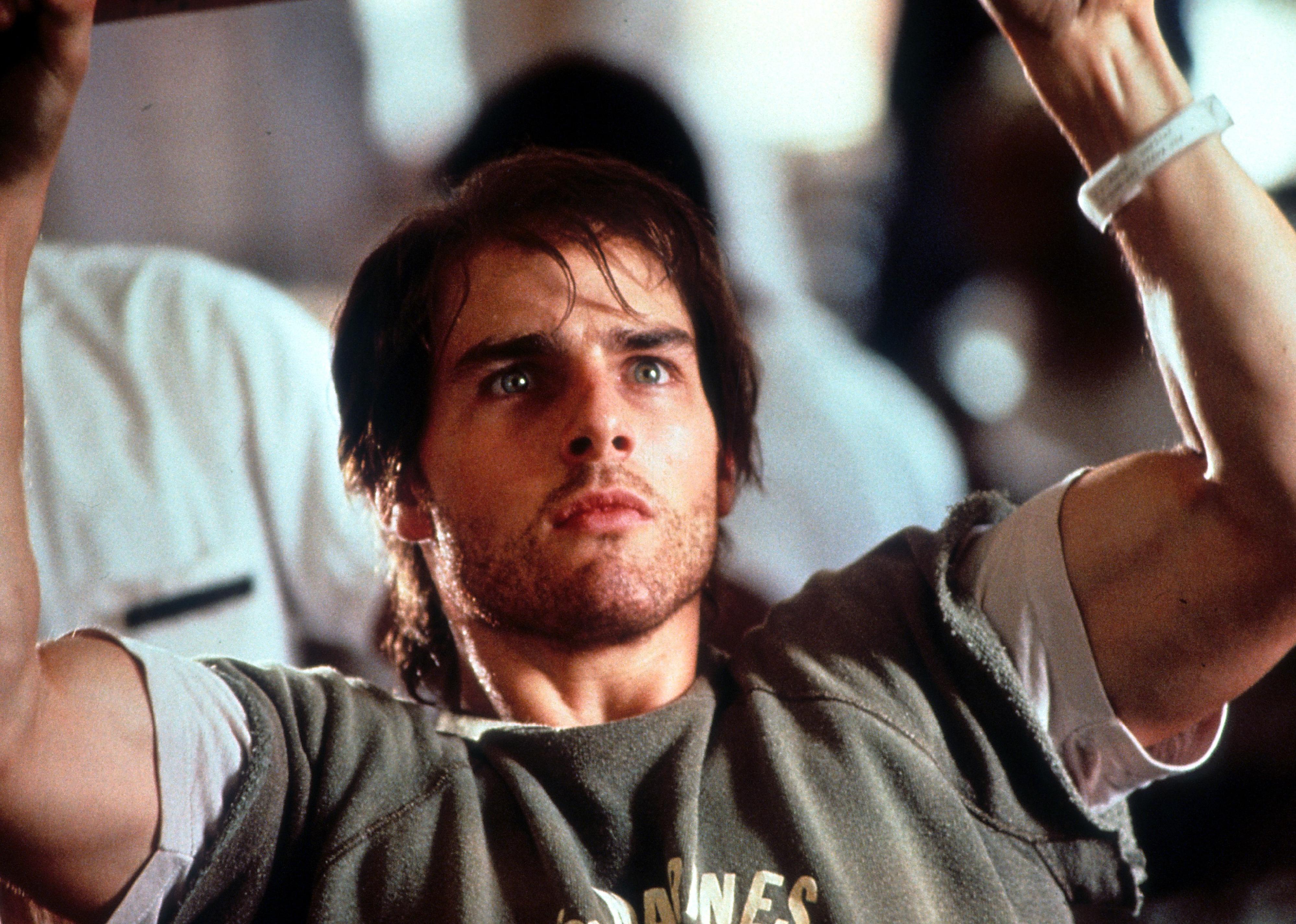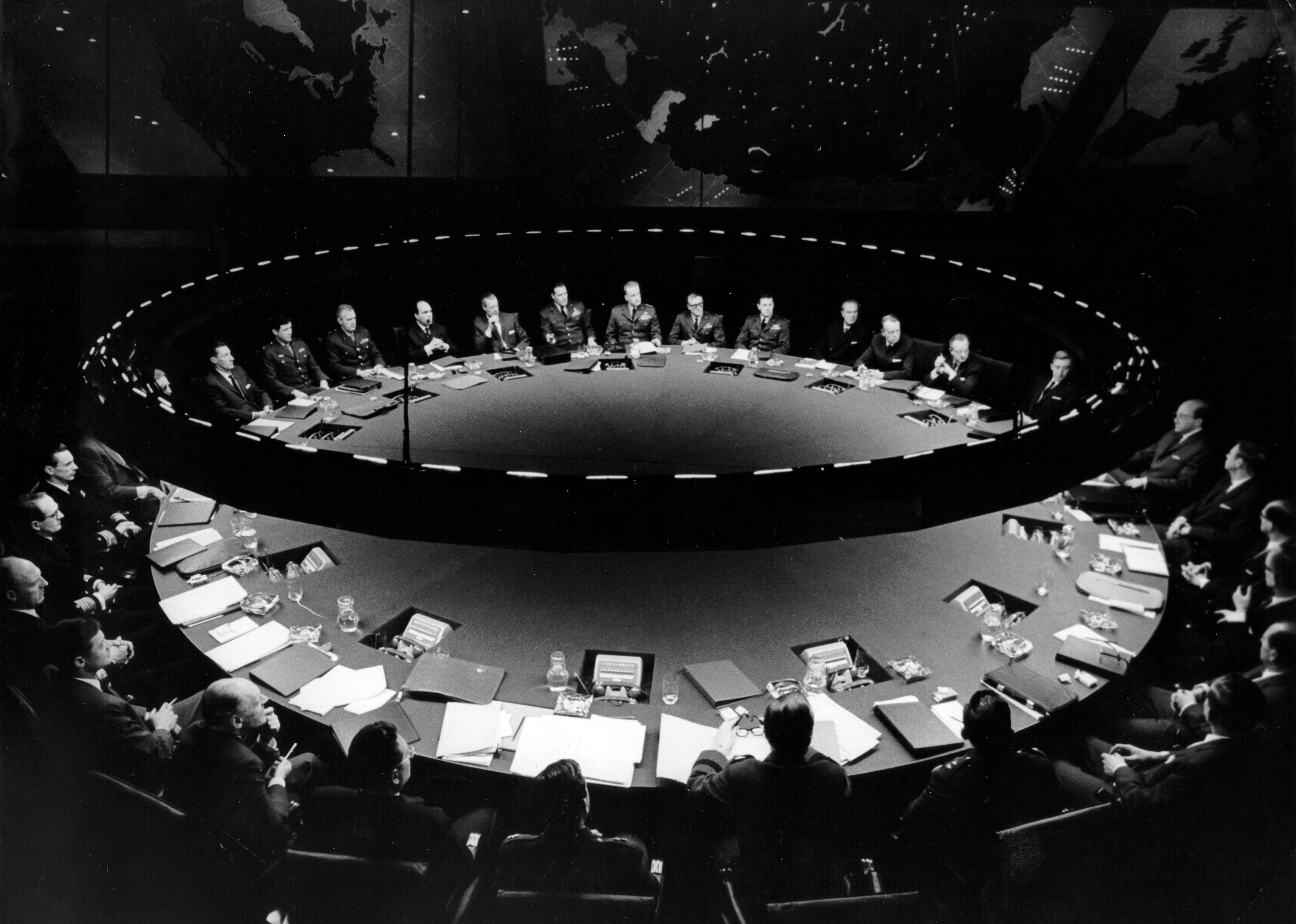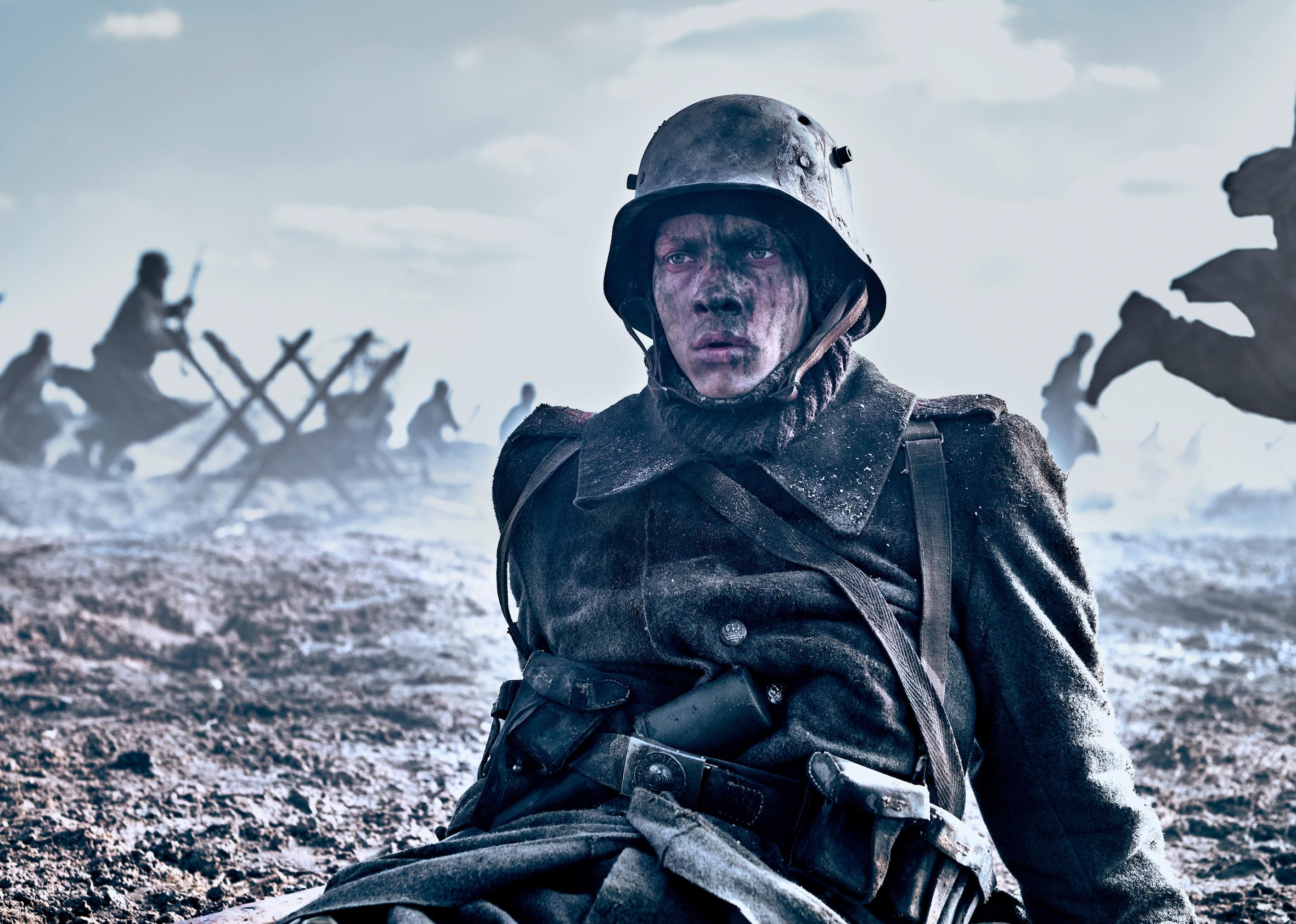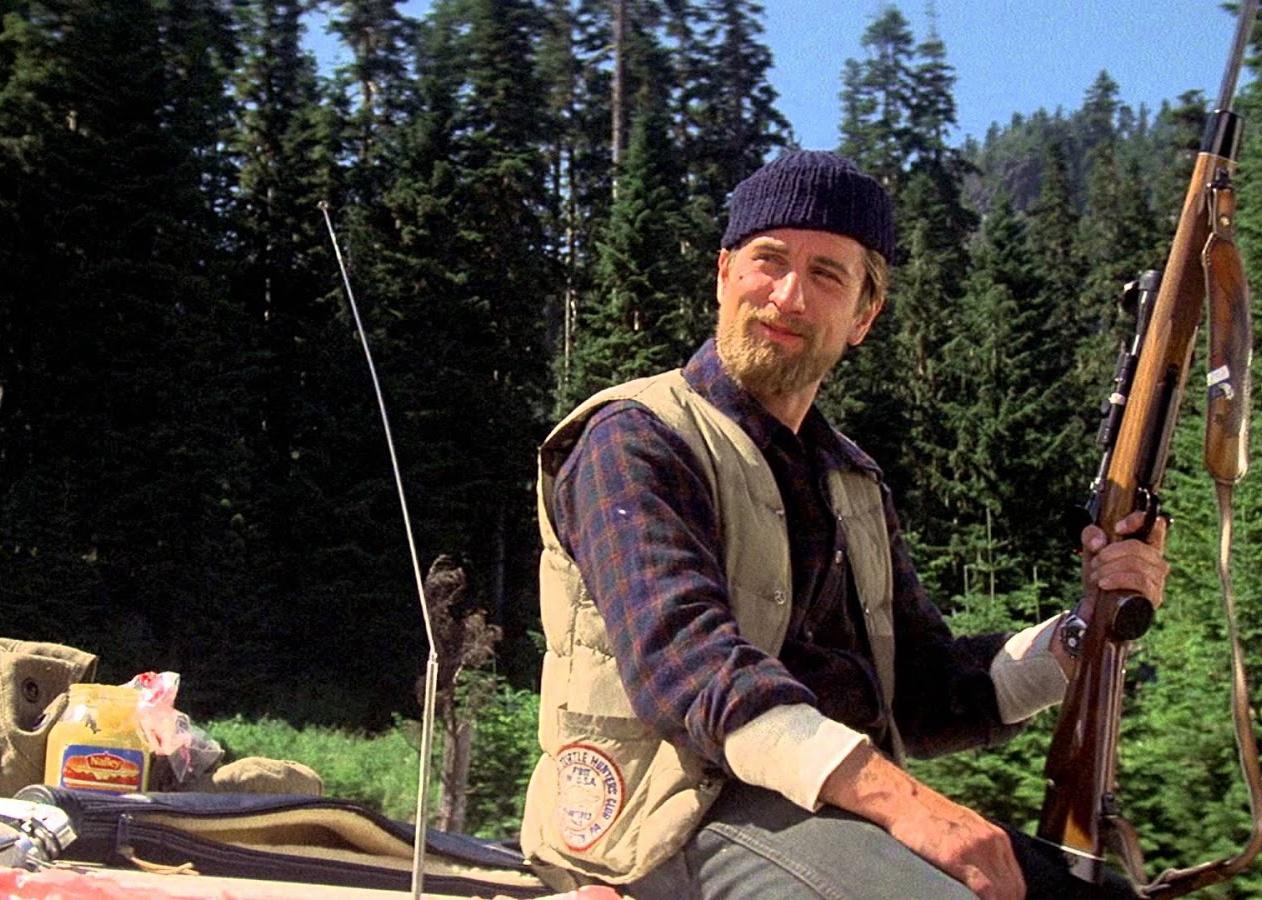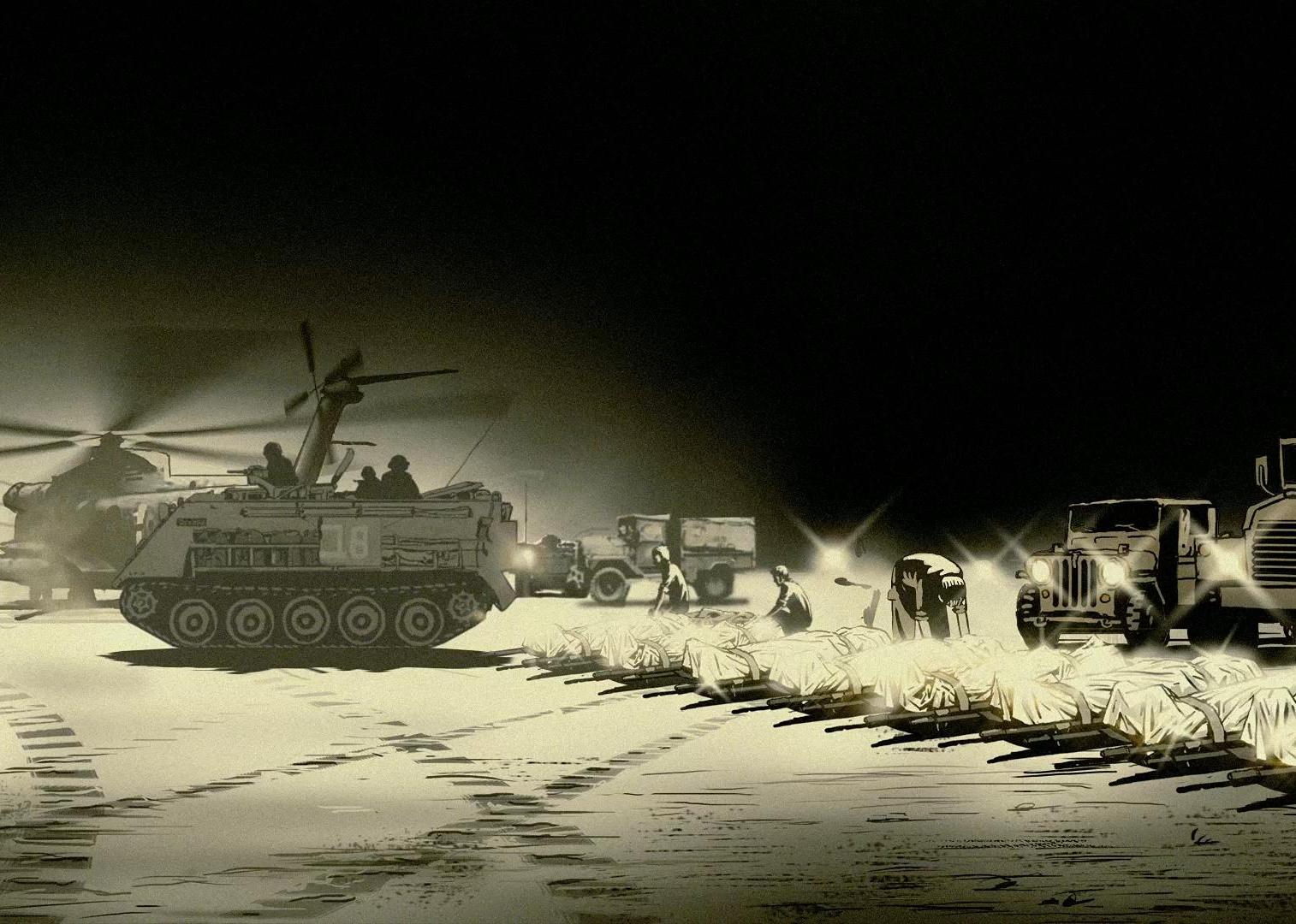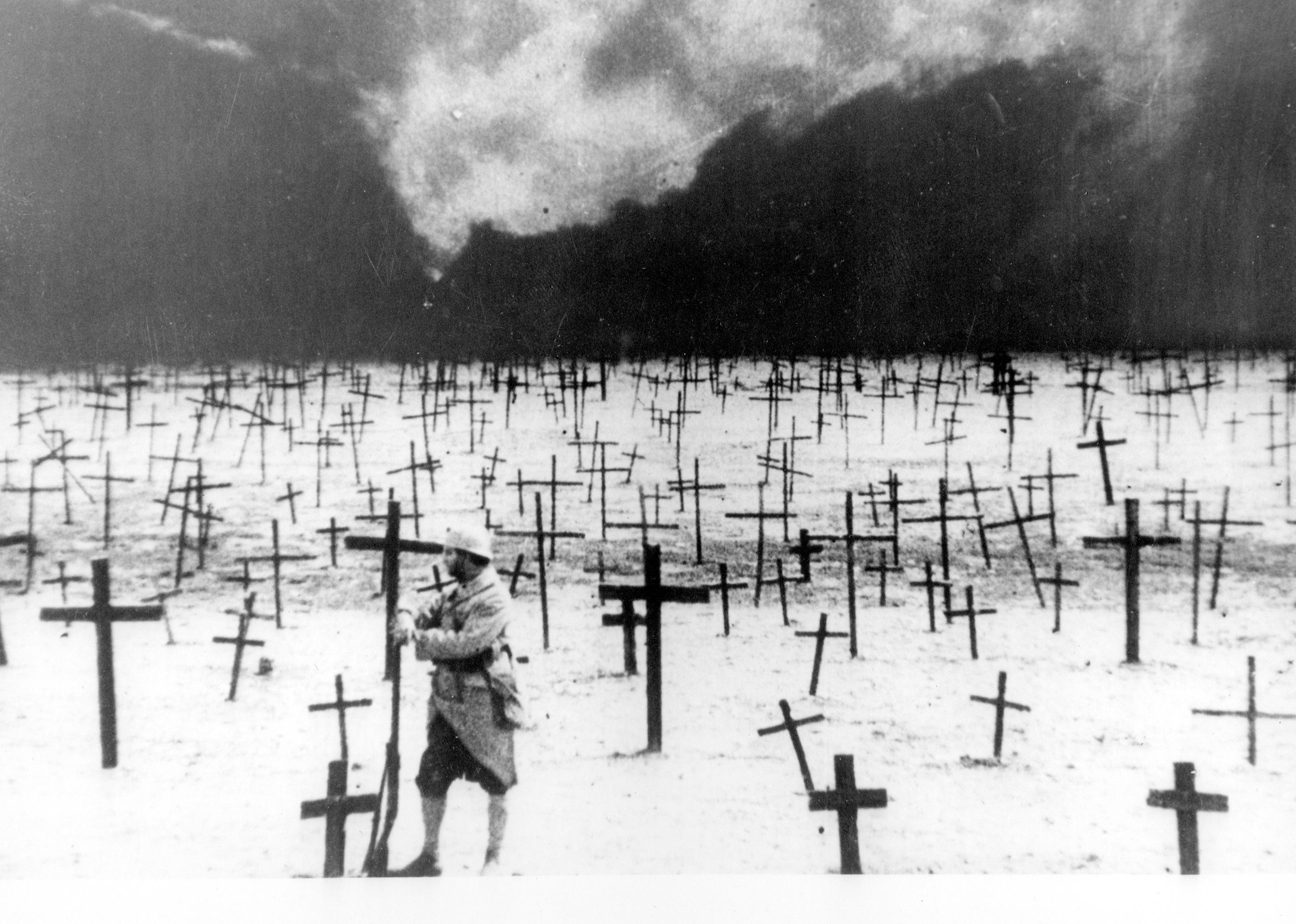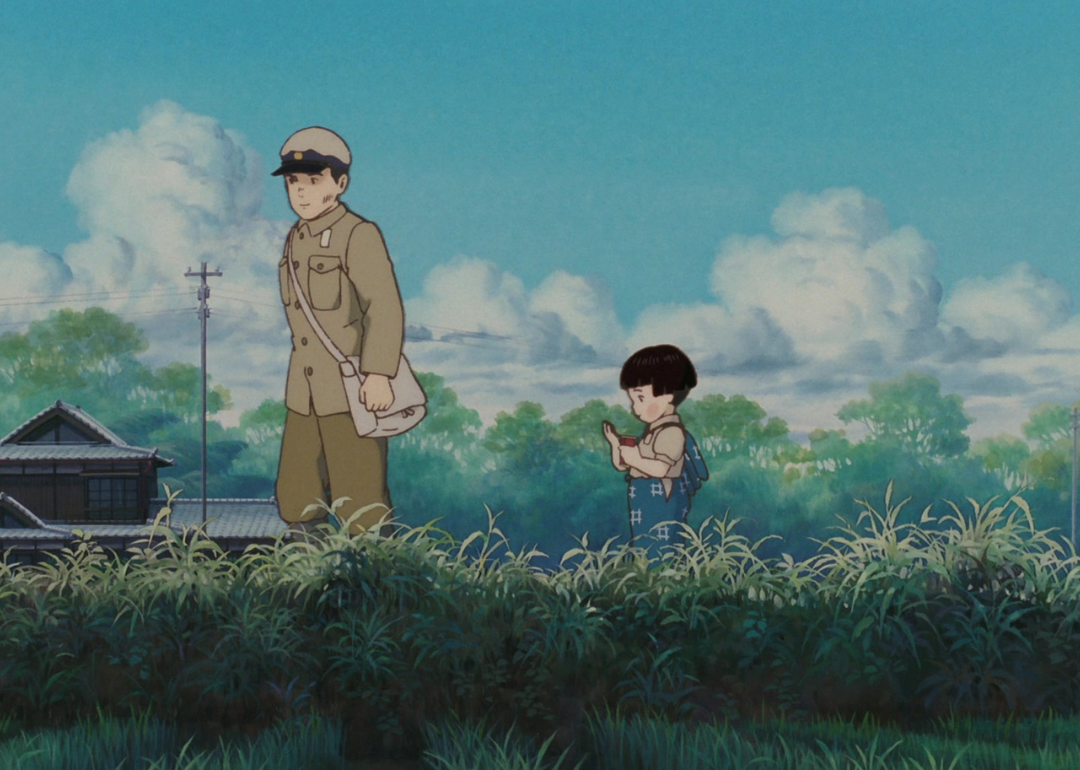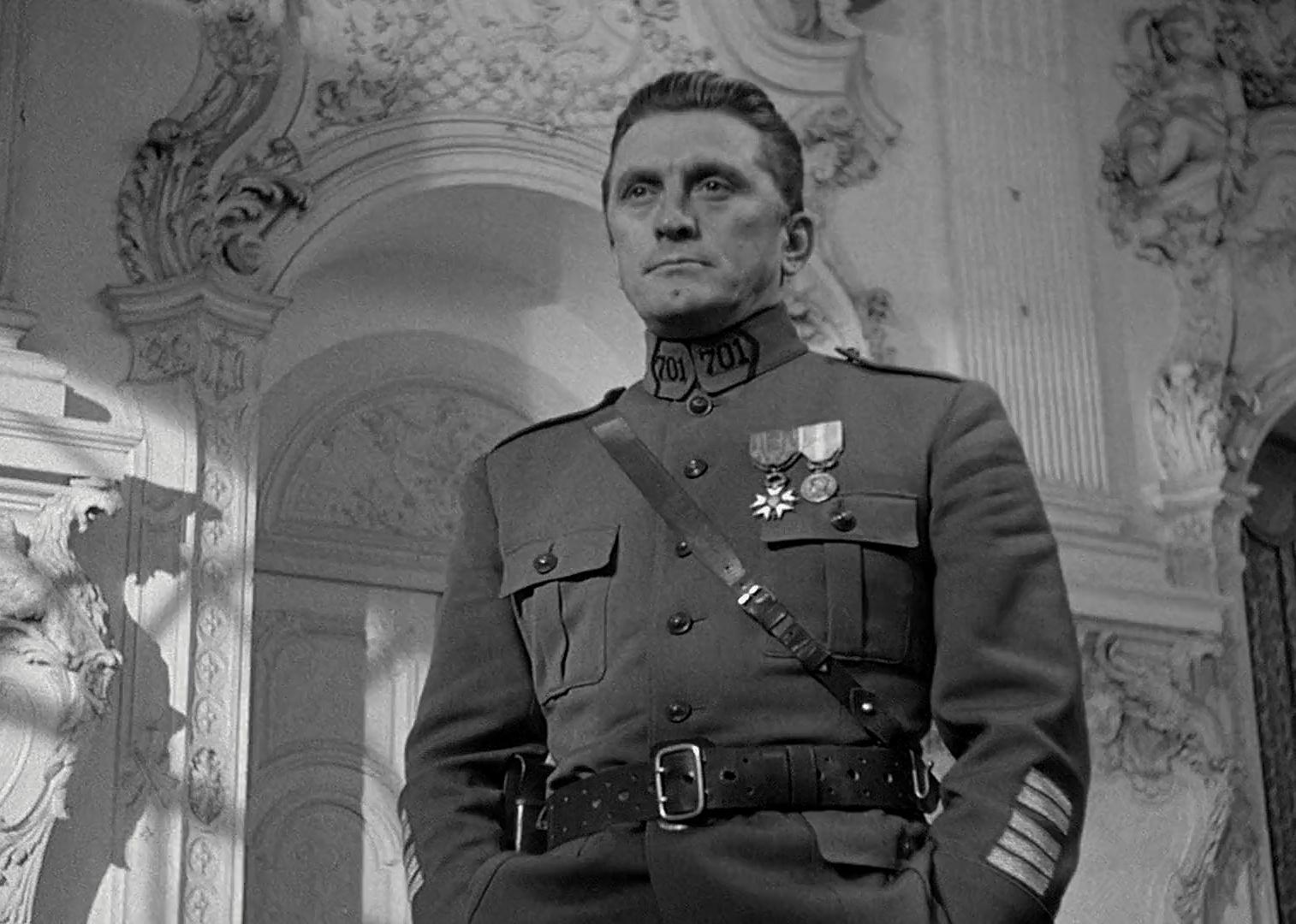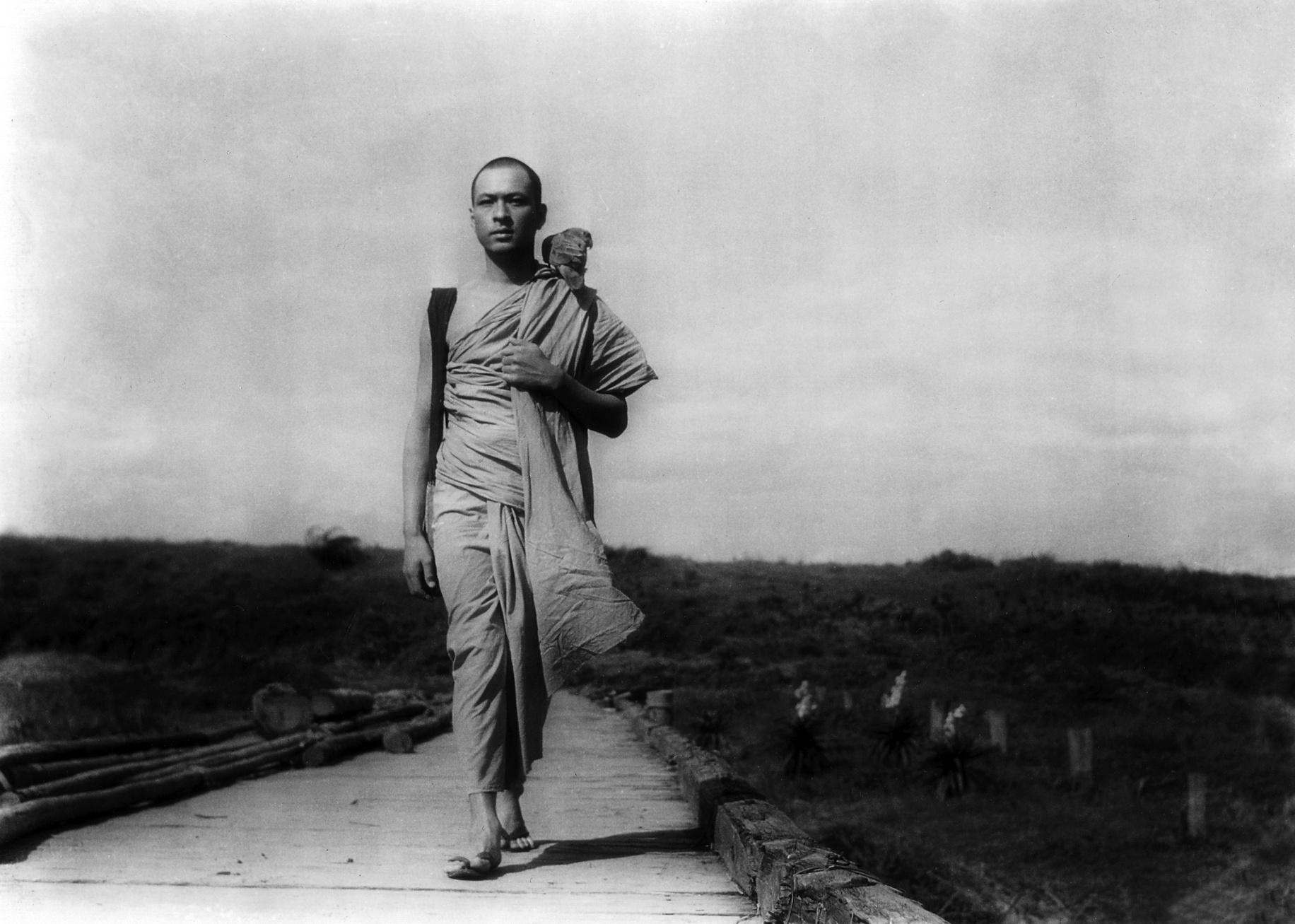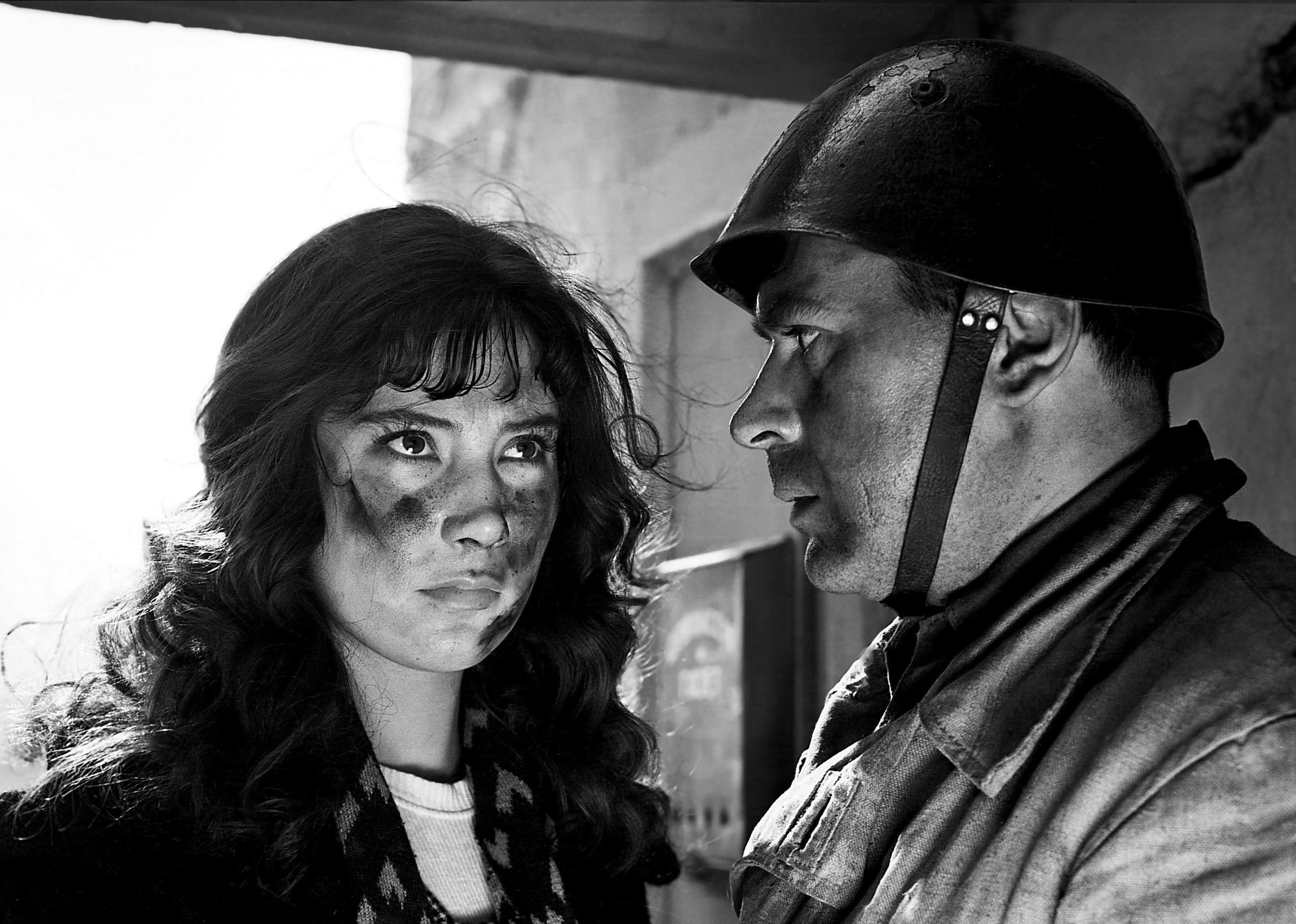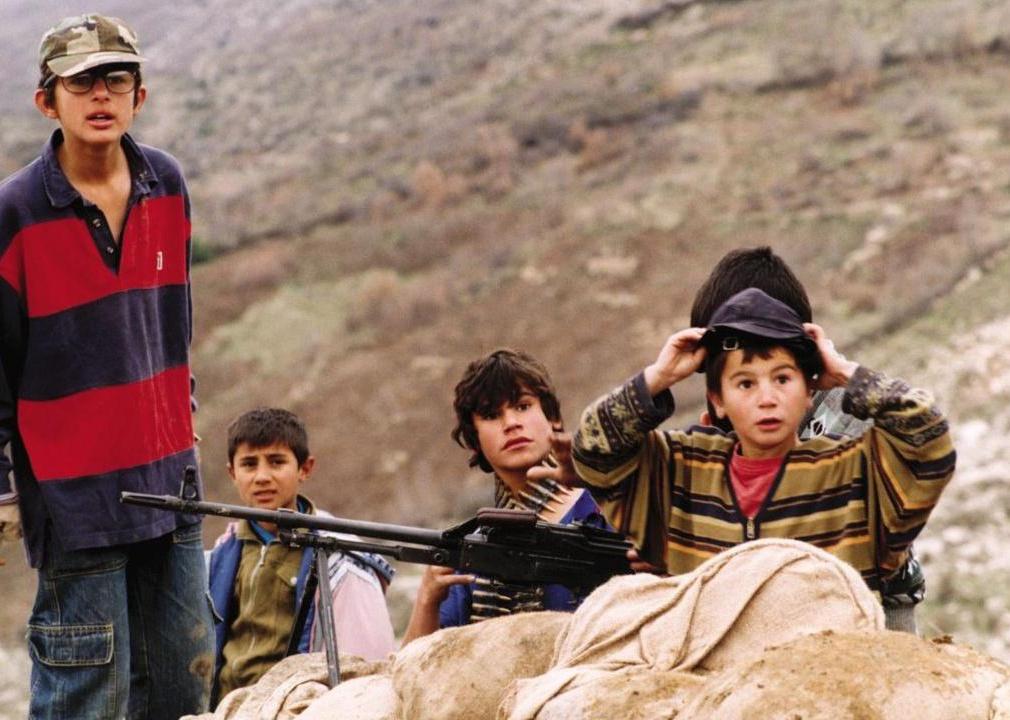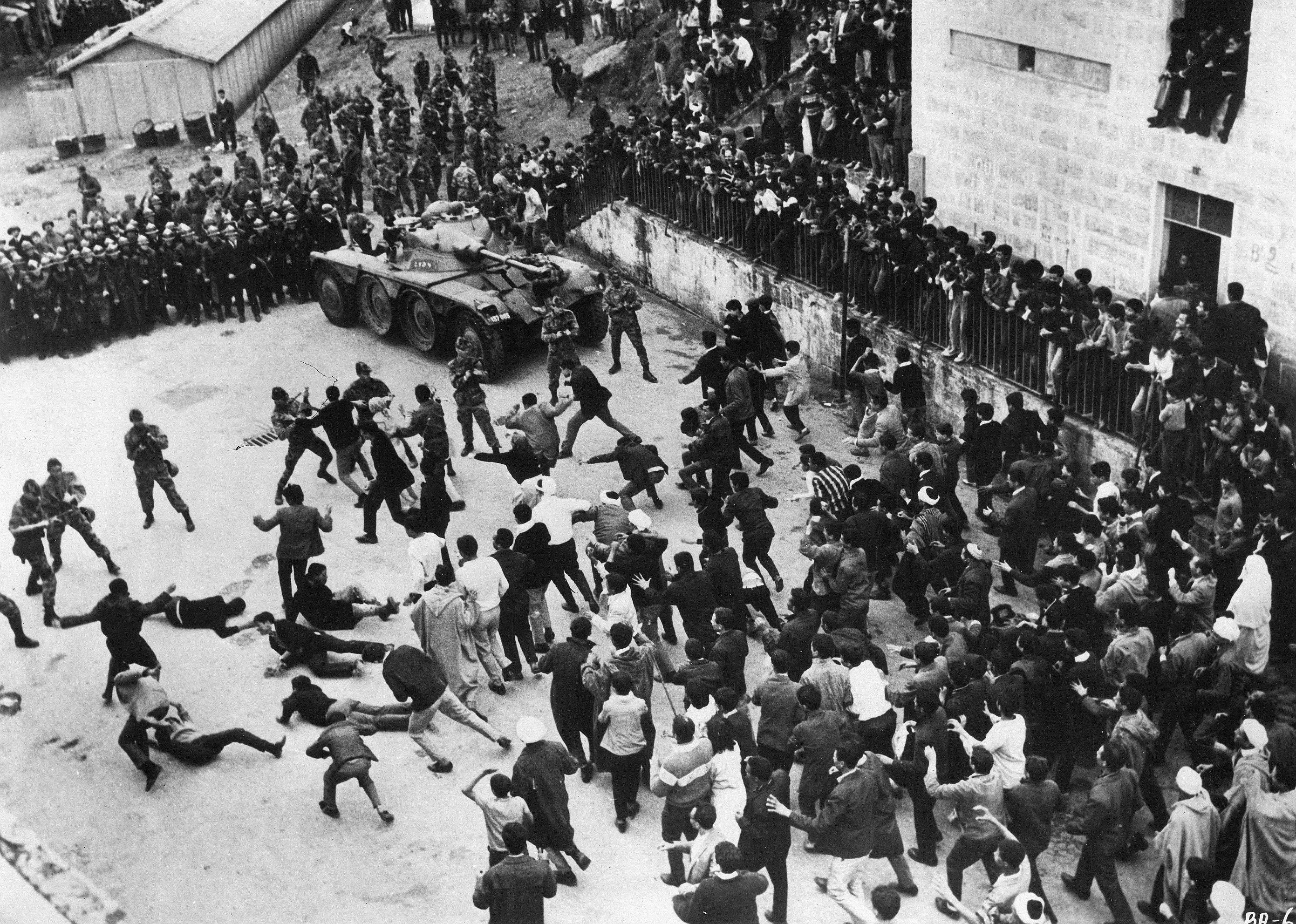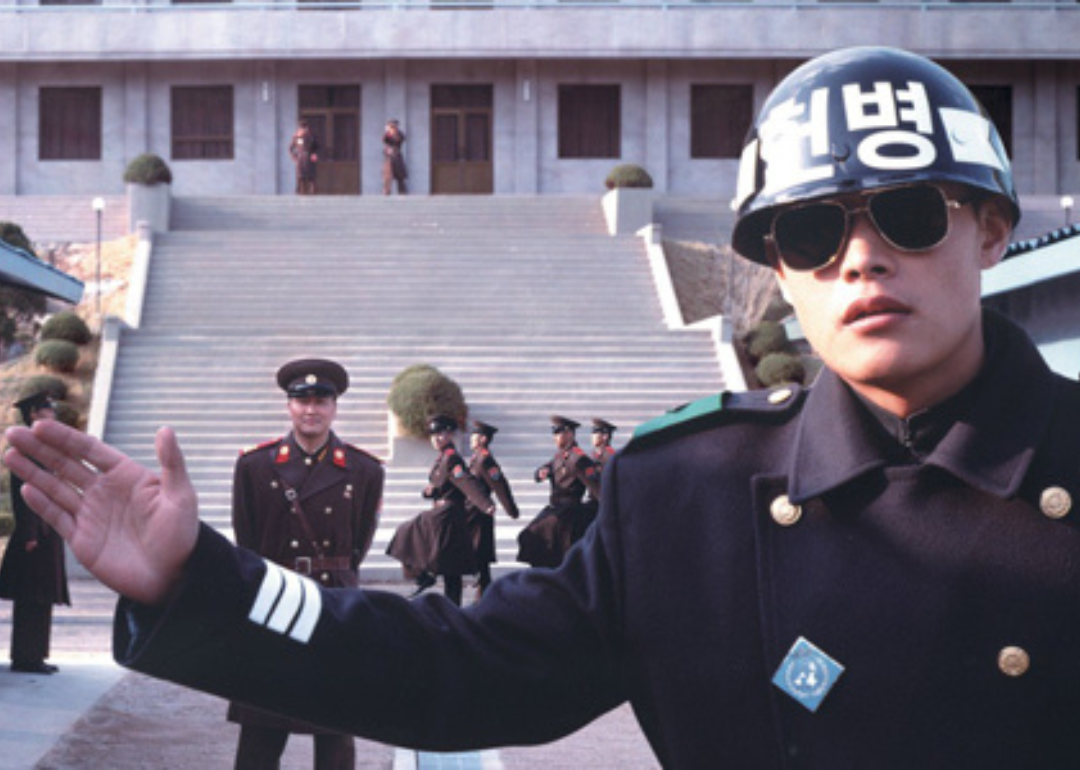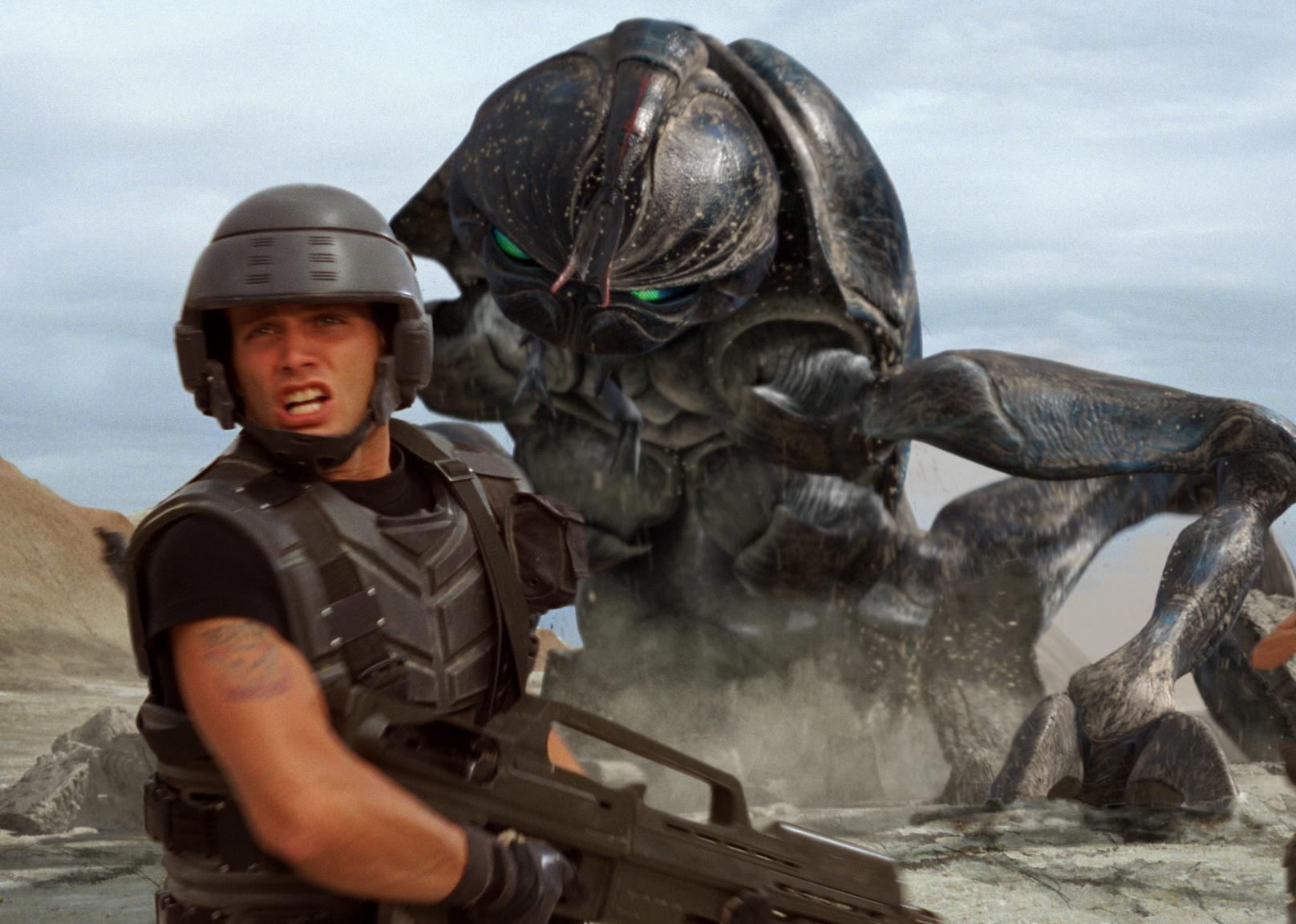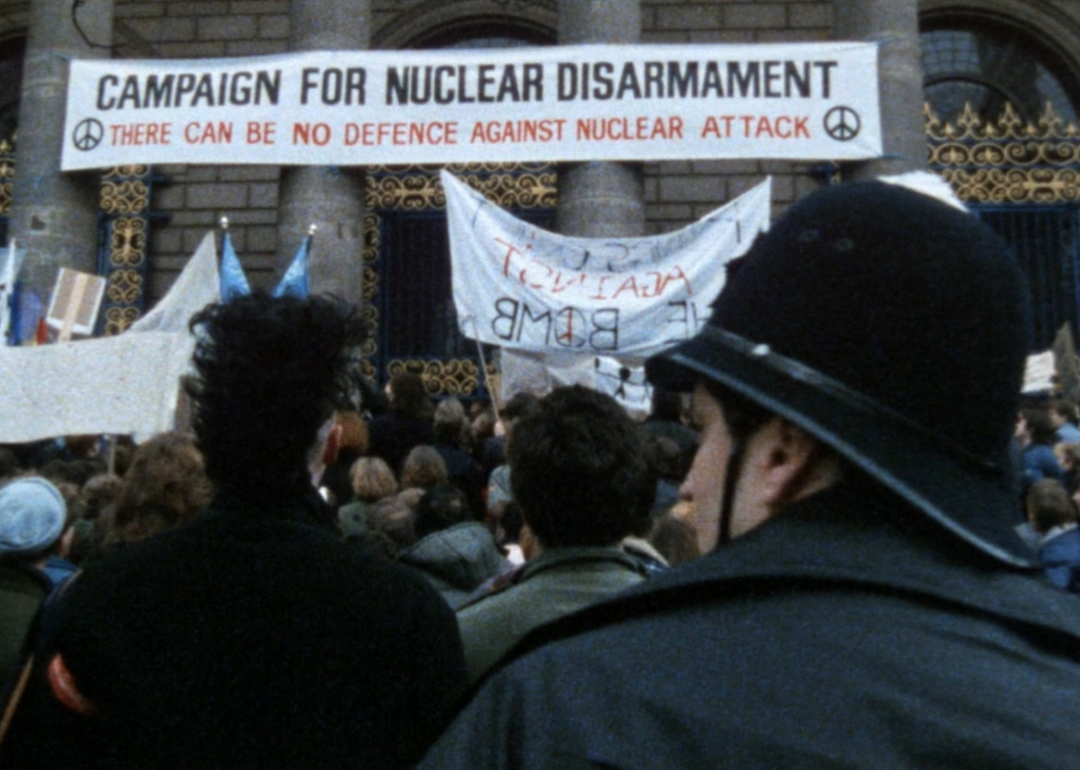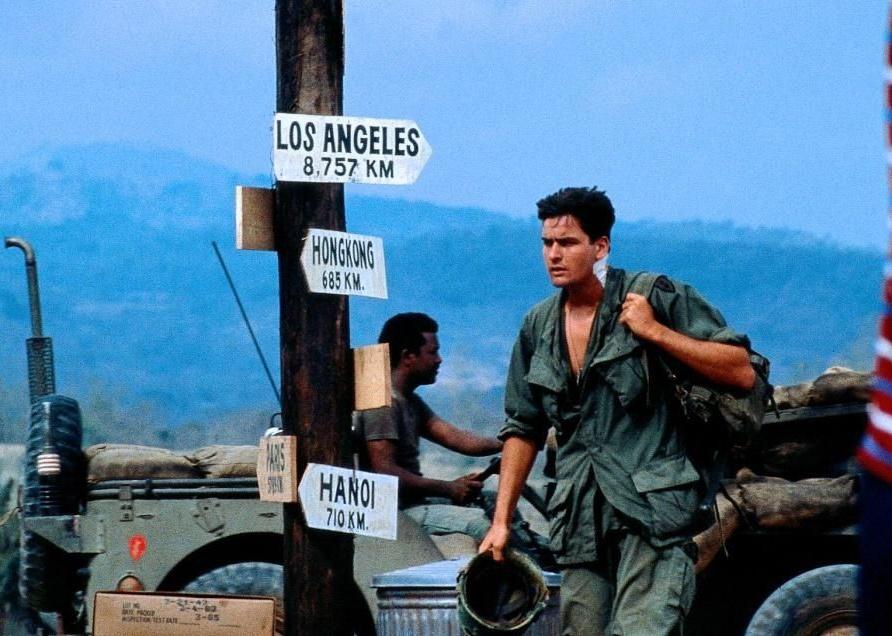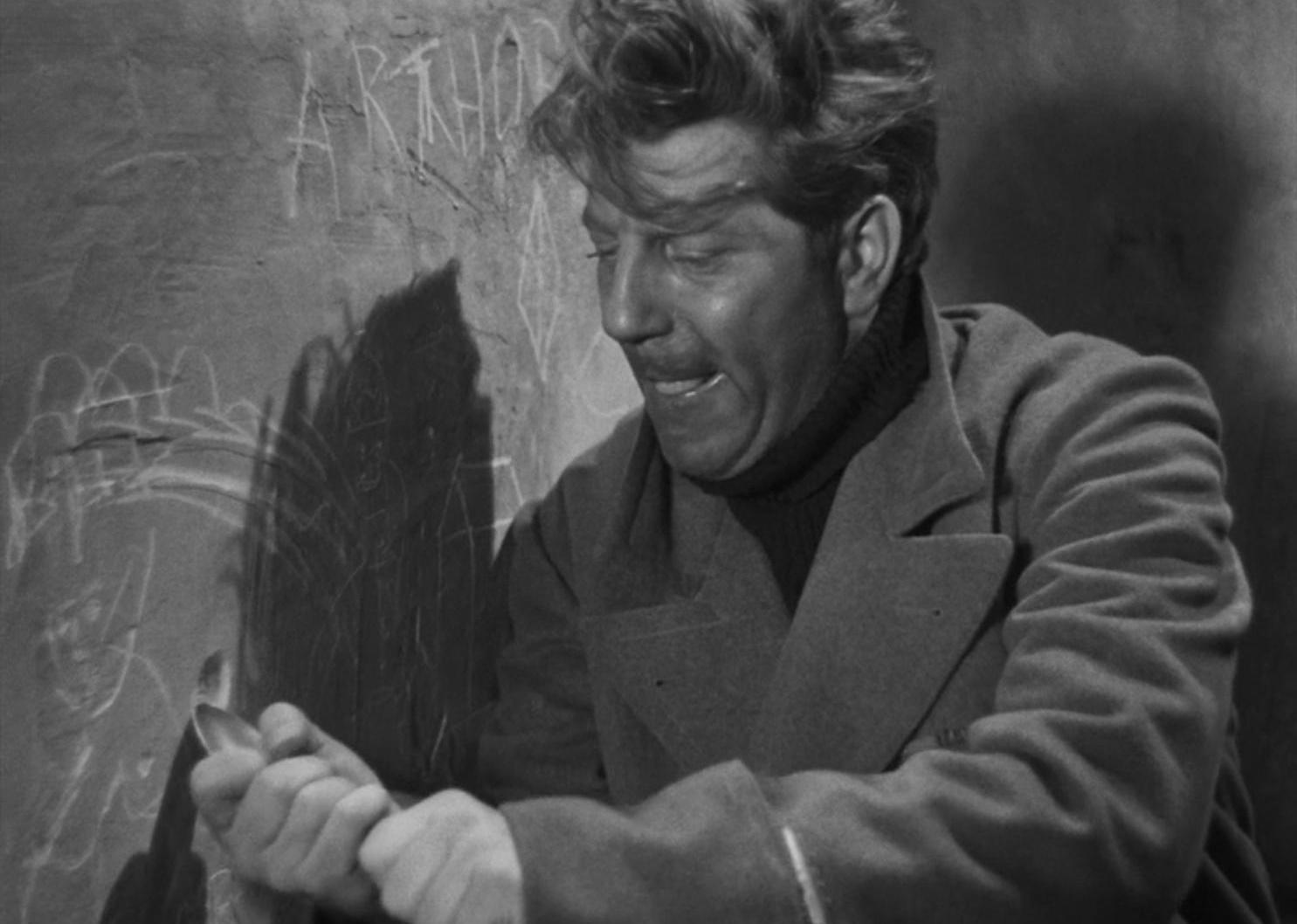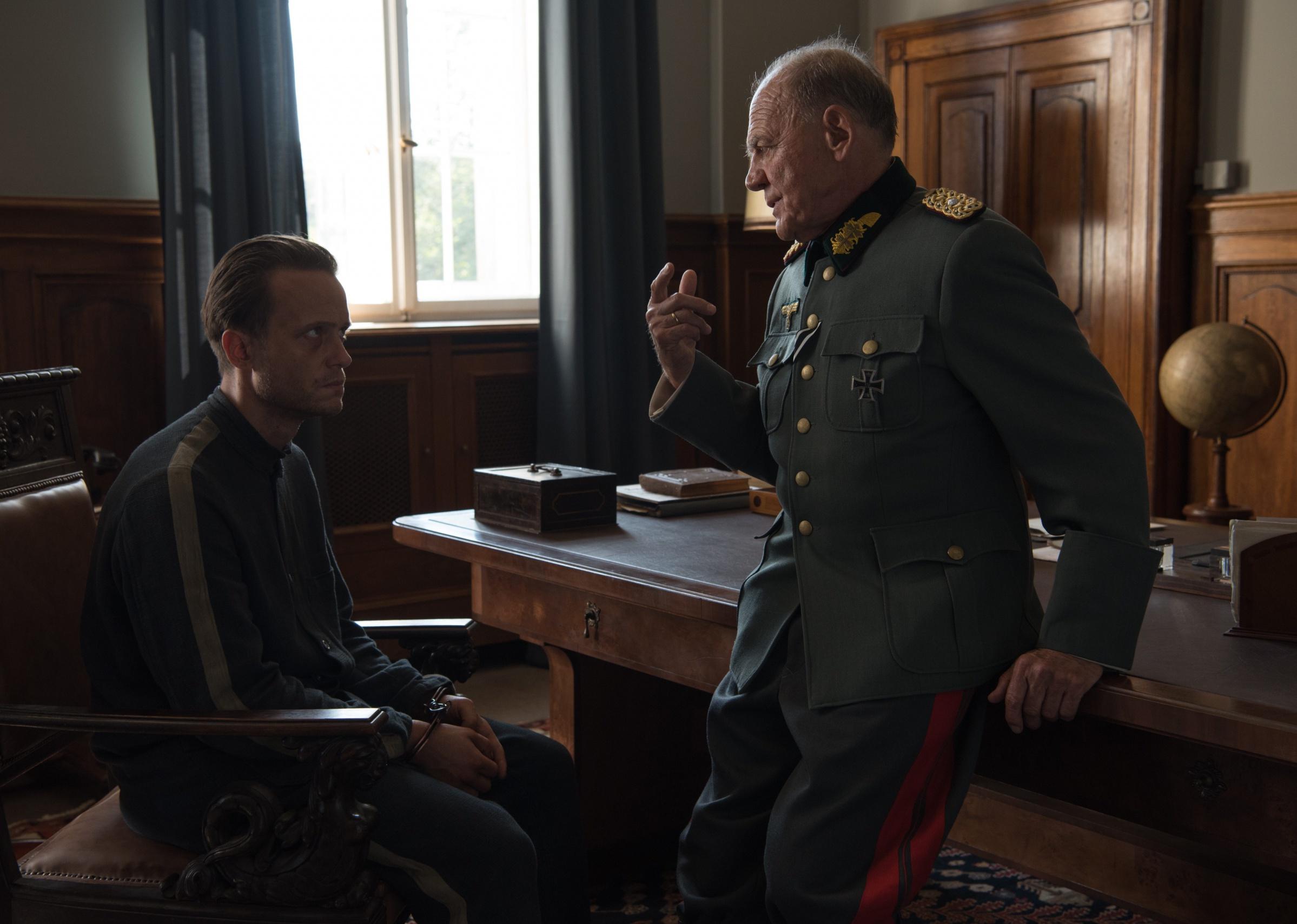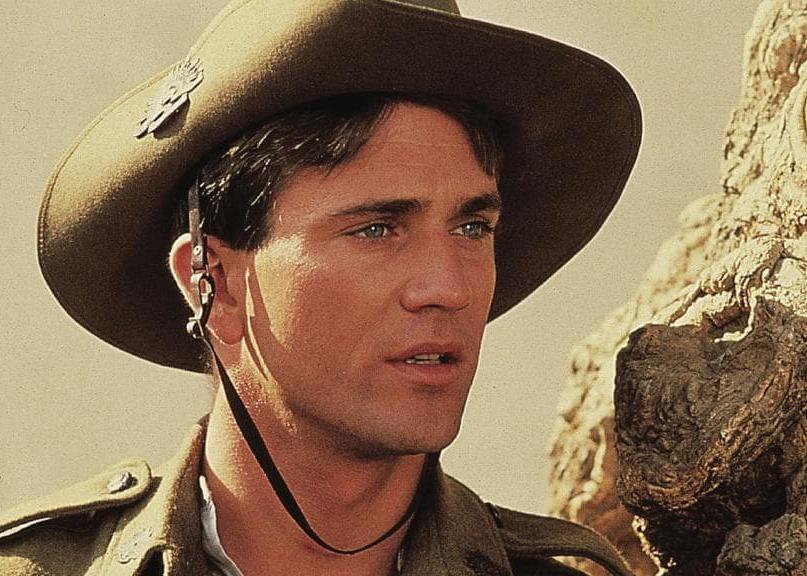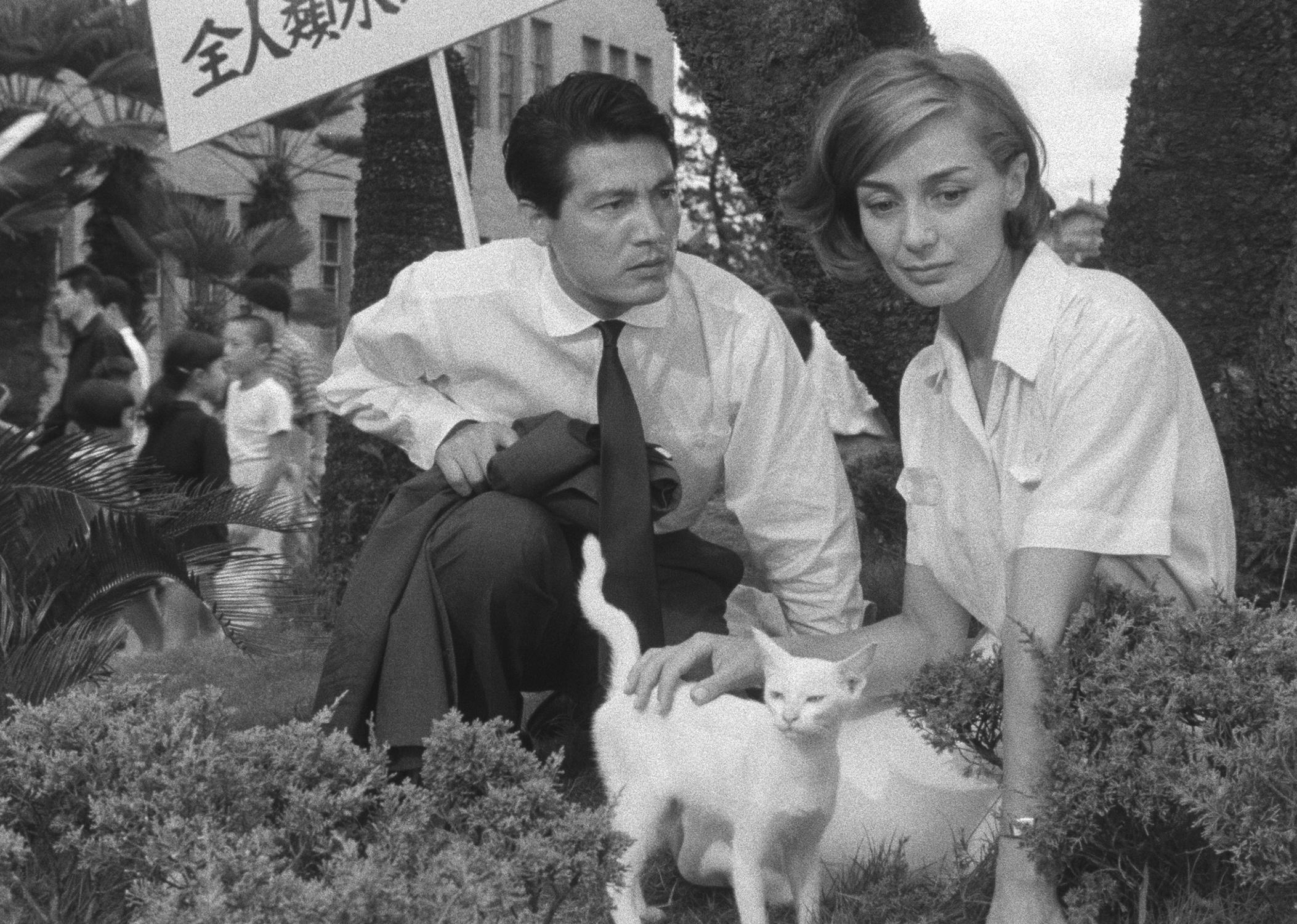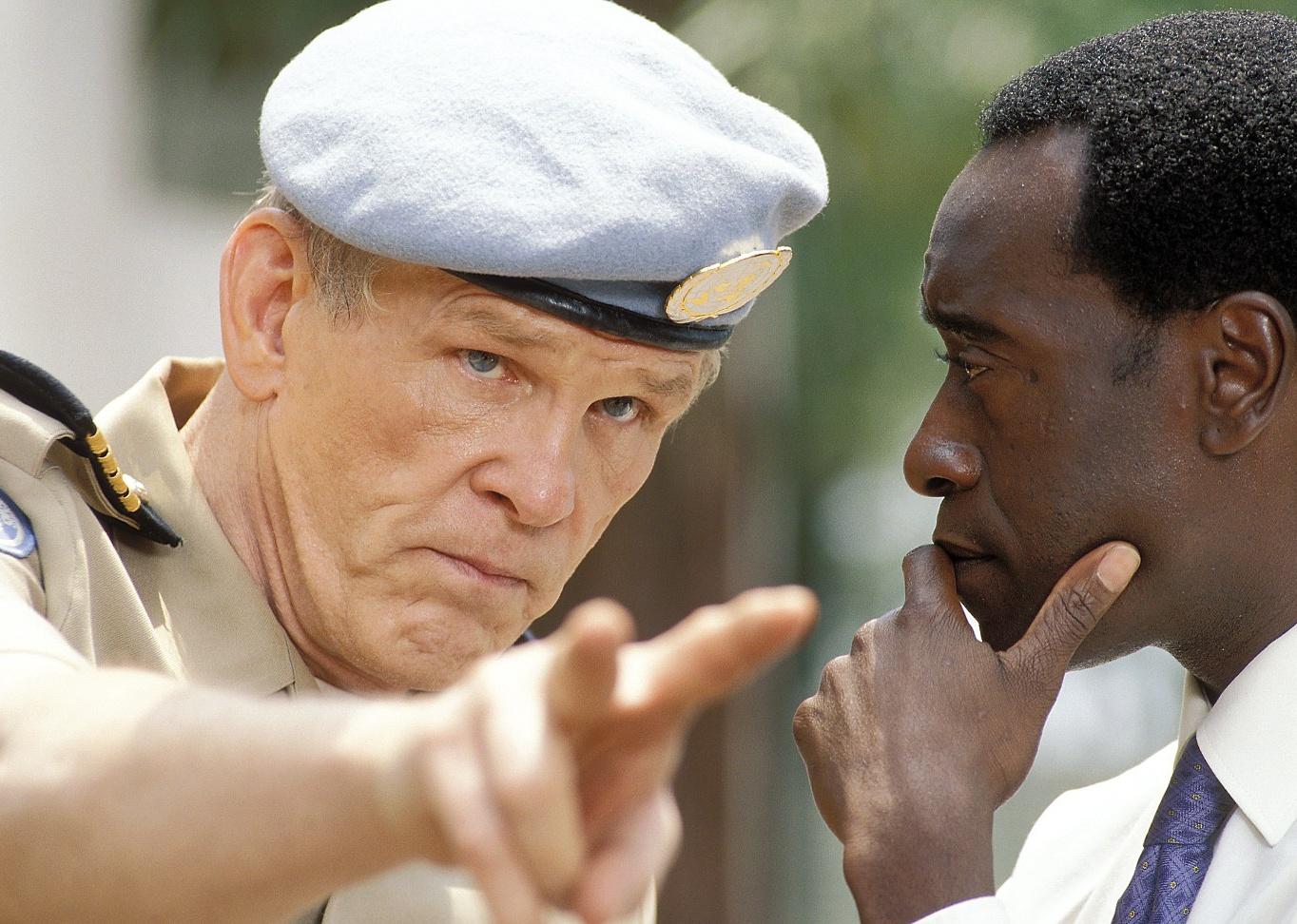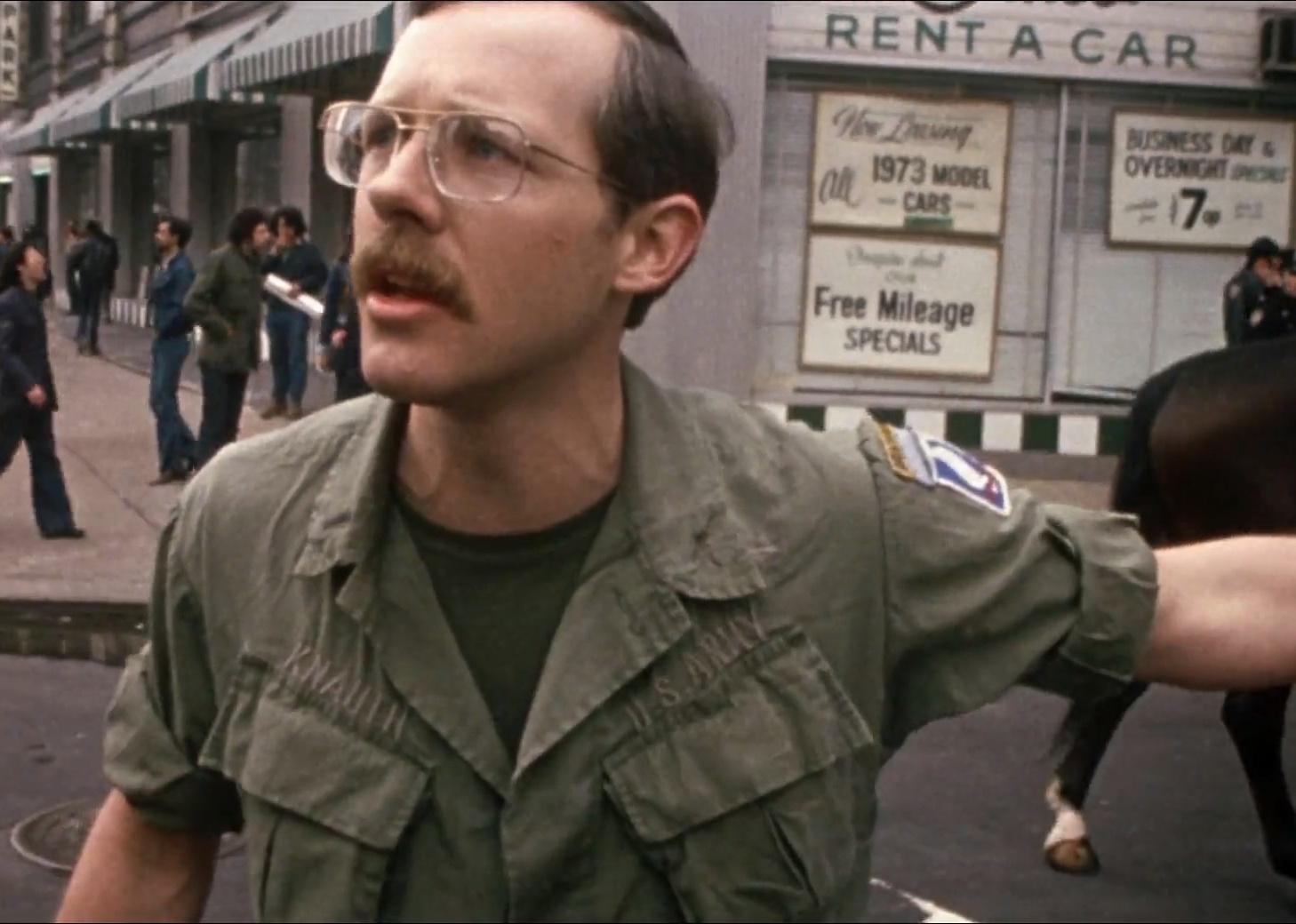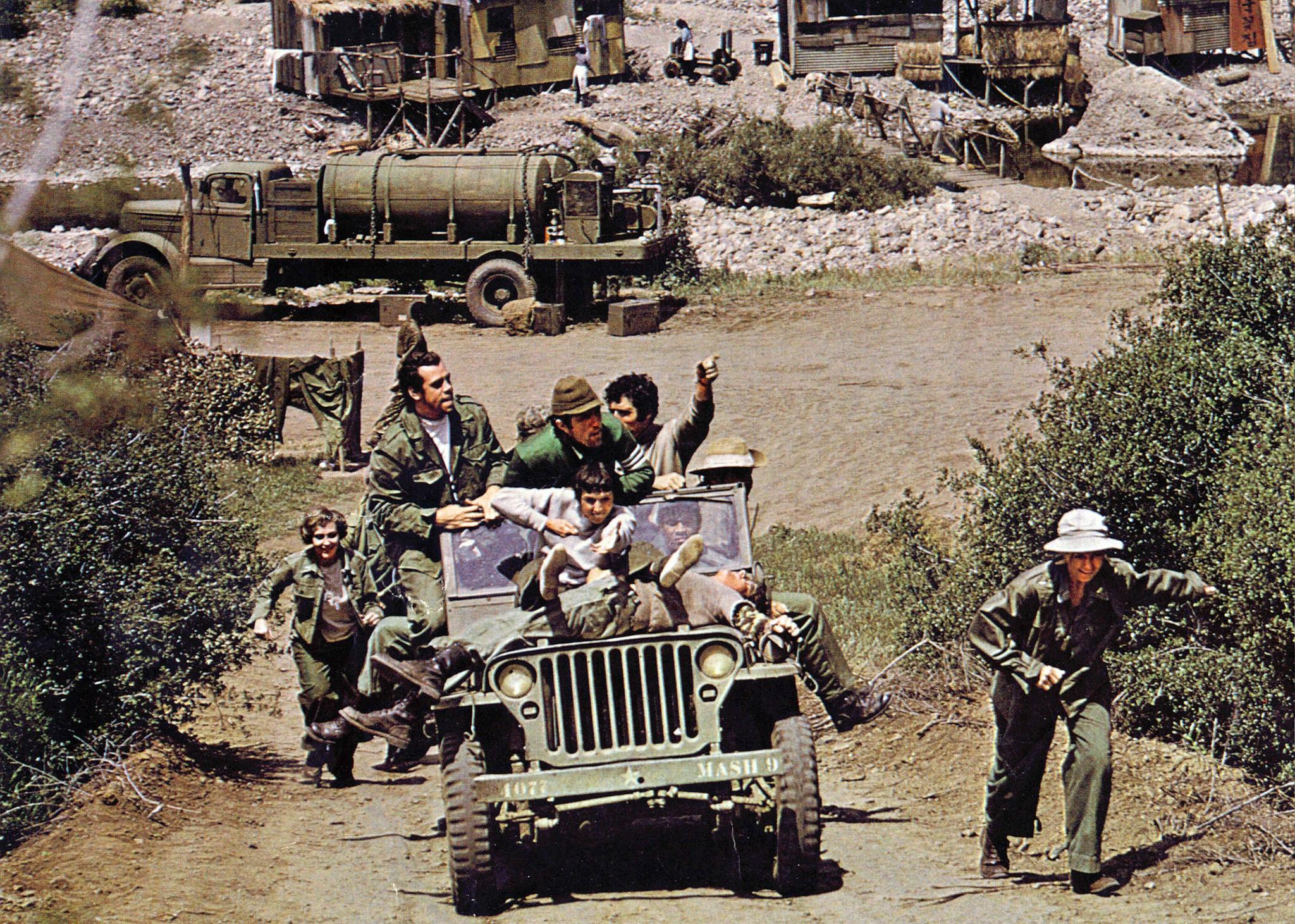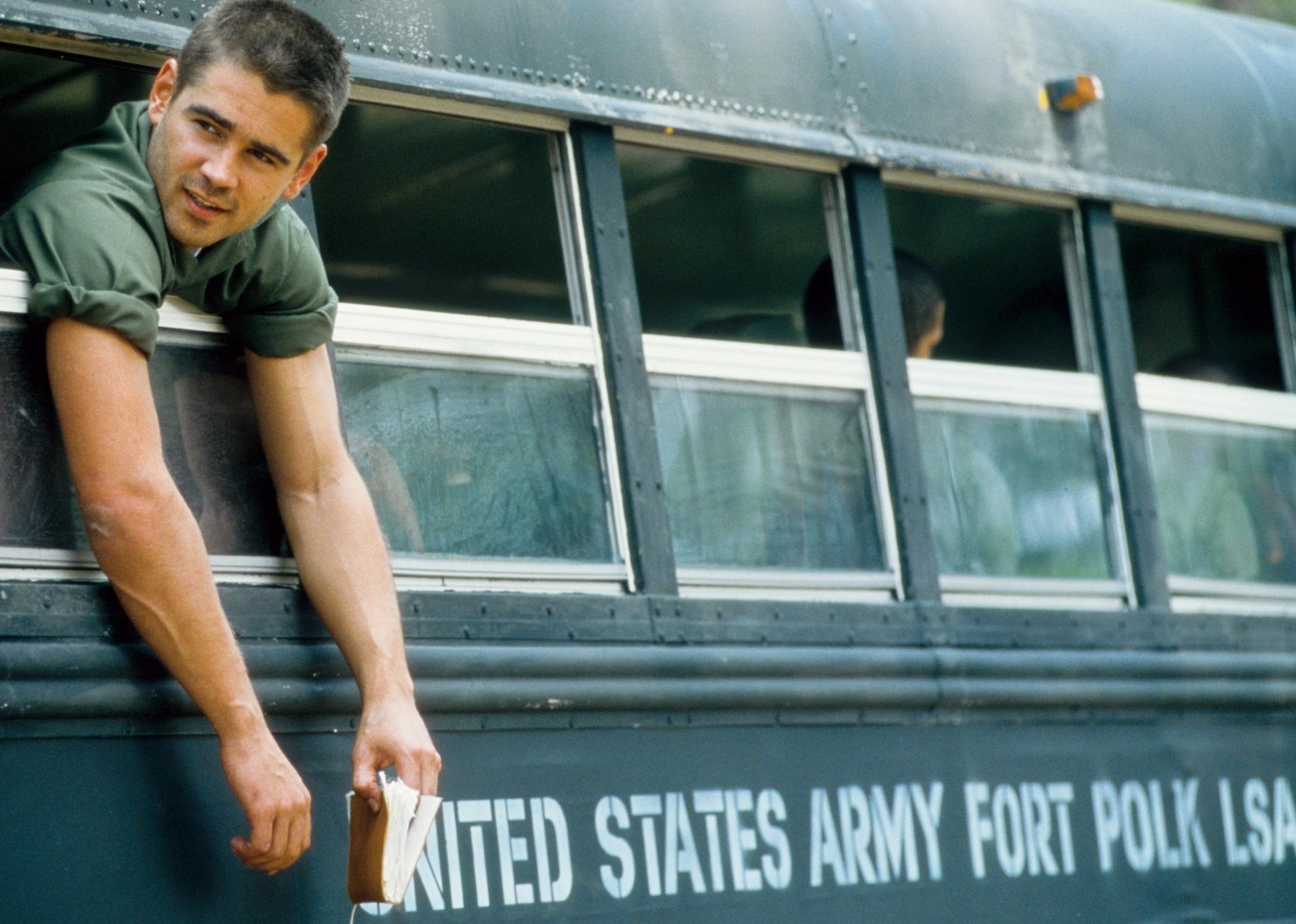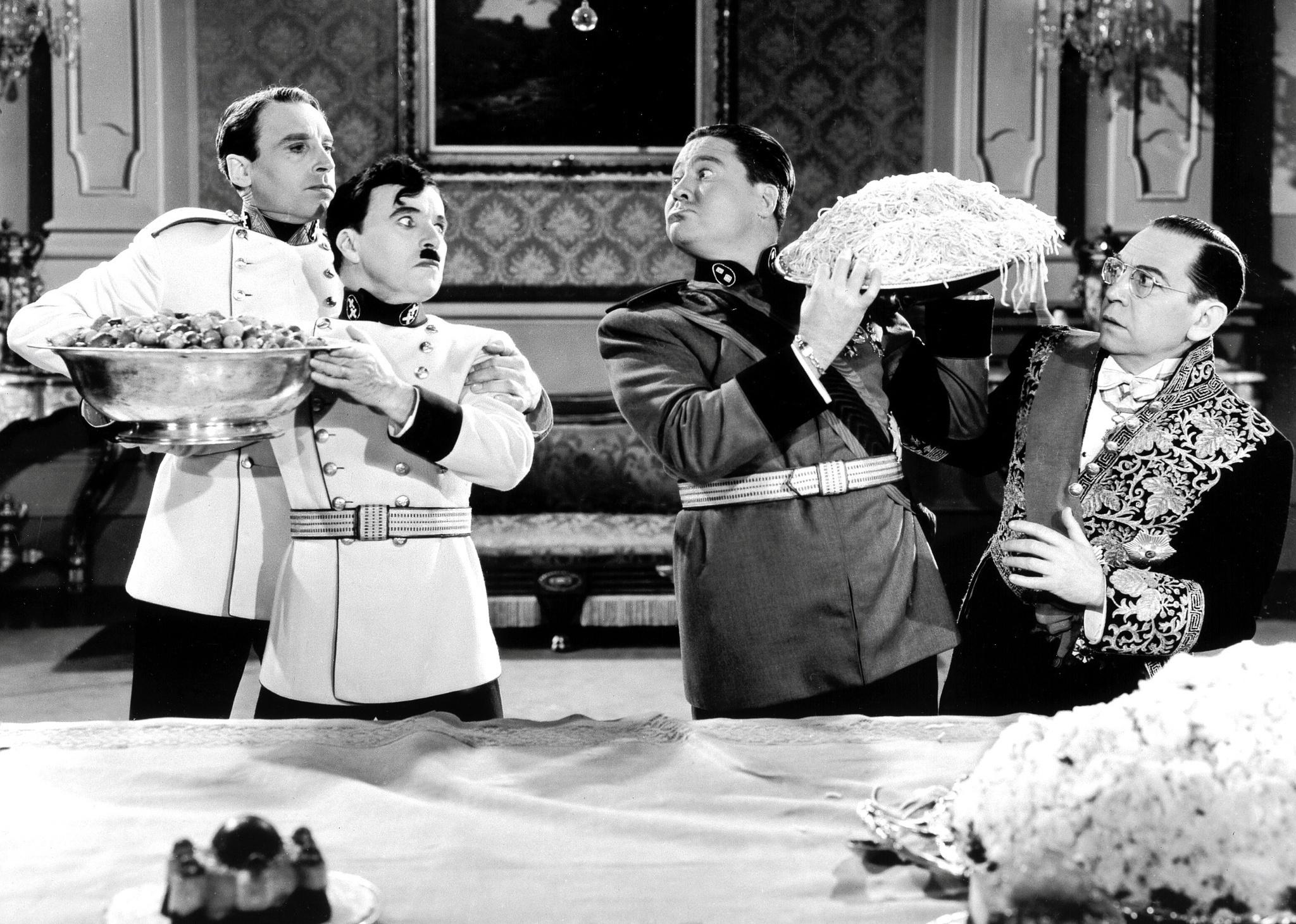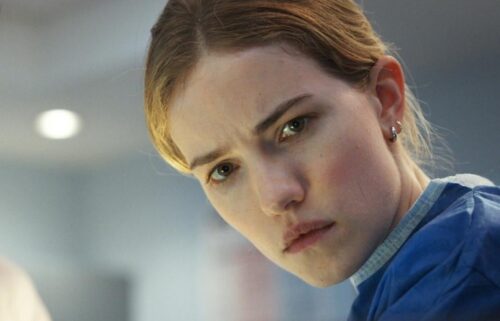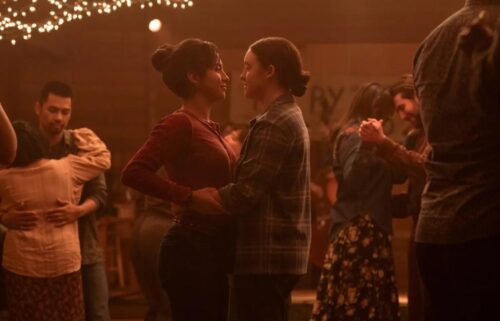30 great anti-war movies
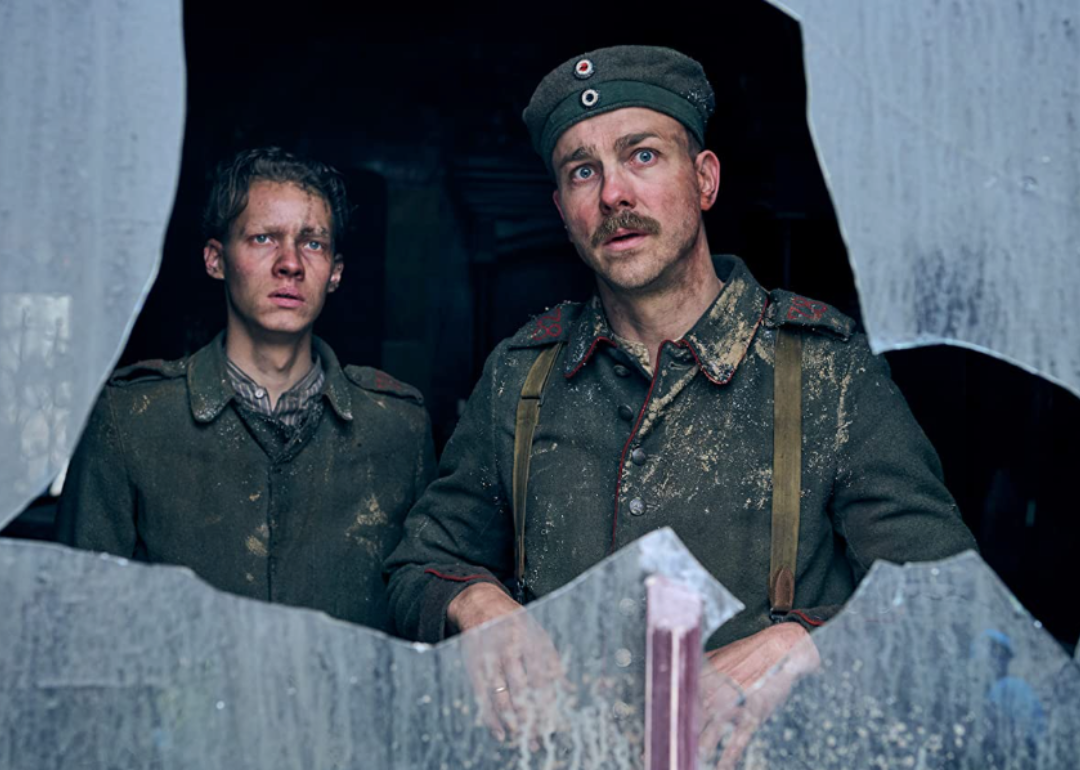
Amusement Park Films
30 great anti-war movies
Felix Kammerer and Albrecht Schuch in “All Quiet on the Western Front.”
War is an unfortunate subject that continues to be relevant throughout history. When the dust settles and the bloody aftermath is tallied, and sometimes even before then, creatives give their views on the situation through outlets like music, literature, and film. Because, like war, human connection is also a practice as old as time.
Stacker researched the history of films with a heavy anti-war theme, tone, or sentiment and spotlighted 30 of the best. To qualify, the film had to have at least a 7.0 on IMDb or 70 Metascore and at least 1,500 IMDb user votes.
These films range from commentary on World War I just months after the fighting ceased to critiques of recent wars and modern views on historical events. These films show how directors have found different ways to pull at the heartstrings and convey their messages, using drama to portray the miseries of war or even leaning into satire or comedy. This list includes fictional stories, films based on real-life events, documentaries, animated movies, and even a musical, proving there are many ways to deliver a stance powerfully.
Scroll through to see what films have helped audiences remember the consequences of war and why peace continues to be an important goal.
You may also like: Sequels that outperformed the original at the box office
![]()
Ixtlan
Born on the Fourth of July (1989)
Tom Cruise in a Marines cut off sweatshirt doing chin ups.
– Director: Oliver Stone
– IMDb user rating: 7.2
– Metascore: 75
– Runtime: 145 minutes
“Born on the Fourth of July” is based on the autobiography of anti-war activist Ron Kovic, a former Marine Corps sergeant who was paralyzed while fighting in the Vietnam War. The film touches on his childhood, his time in the military and Vietnam, and how he became an anti-war activist. It’s the second installment in director Oliver Stone’s trilogy about the Vietnam War, including 1986’s “Platoon” and 1993’s “Heaven and Earth.”
Stanley Kubrick Productions
Dr. Strangelove or: How I Learned to Stop Worrying and Love the Bomb (1964)
A large round table of men in military uniforms and suits.
– Director: Stanley Kubrick
– IMDb user rating: 8.4
– Metascore: 97
– Runtime: 95 minutes
Stanley Kubrick chose a satirical approach to the topic of war while creating “Dr. Strangelove or: How I Learned to Stop Worrying and Love the Bomb.” The iconic black comedy presents the Cold War fears of nuclear war through the eyes of unhinged U.S. Brigadier General Jack D. Ripper, who orders a pre-emptive nuclear strike on the Soviet Union, and the U.S. president as he and his advisors desperately attempt to stop the attack.
Amusement Park Films
All Quiet on the Western Front (2022)
A man battered from battle sits on the ground as chaos ensues around him.
– Director: Edward Berger
– IMDb user rating: 7.8
– Metascore: 76
– Runtime: 148 minutes
Adapted from the 1929 novel of the same name, “All Quiet on the Western Front” shows the perils of war through the lens of a young German soldier named Paul Bäumer. The movie takes place during the final days of World War I and depicts the horrors Bäumer and his friends endure after being persuaded to enlist in the German army. Their views on war quickly transform from romantic heroism to simply trying to survive after they’re deployed.
EMI Films
The Deer Hunter (1978)
Robert De Niro in a plaid shirt, vest and beanie sitting on the hood of a car holding a rifle.
– Director: Michael Cimino
– IMDb user rating: 8.1
– Metascore: 86
– Runtime: 183 minutes
“The Deer Hunter” boasts an all-star cast of Robert De Niro, Christopher Walken, and John Savage, who play friends Mike Vronsky, Nick Chevotarevich, and Steven Pushkov, respectively, that end up fighting alongside each other in the Vietnam War. The film explores not only the horrors soldiers face while at war, but also the lasting PTSD many suffer after coming home.
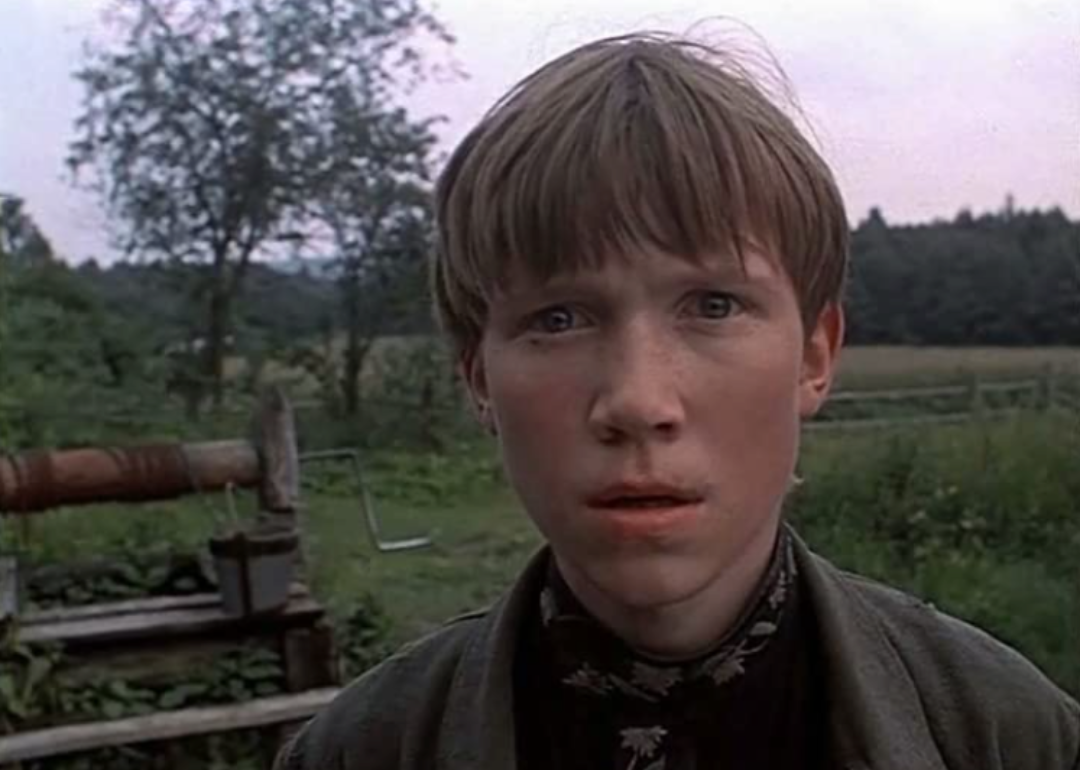
Belarusfilm
Come and See (1985)
A young boy stands in a field looking into the distance.
– Director: Elem Klimov
– IMDb user rating: 8.4
– Metascore: data not available
– Runtime: 142 minutes
“Come and See” is a Soviet movie that centers around the Nazi German occupation of Belarus during World War II. The story follows a Belarusian partisan teen named Flyora, who joins the resistance movement, and the atrocities he witnesses the Nazis inflict upon his people.
You may also like: Different movies with the same plots
Bridgit Folman Film Gang
Waltz with Bashir (2008)
An illustration of tanks, military vehicles, and soldiers in war.
– Director: Ari Folman
– IMDb user rating: 8.0
– Metascore: 91
– Runtime: 90 minutes
“Waltz with Bashir” is an Israeli animated war documentary drama that explores director Ari Folman’s time fighting in the 1982 Lebanon War. The film follows his journey as he struggles to remember his time at war after realizing he can’t recall anything about his deployment.
Pathé Frères
J’accuse! (1919)
A man standing next to an endless field of crosses in the ground.
– Director: Abel Gance
– IMDb user rating: 7.7
– Metascore: data not available
– Runtime: 166 minutes
Released just months after the end of World War I, “J’accuse!” is a French silent film that juxtaposes a romance with the horrors of war. It was filmed in 1918, and some of the extras were actual soldiers. “‘J’Accuse’ for me was not just a film,” director Abel Gance said, mentioning that many of his own friends died in the trenches of WWI. “I had a feeling of frenzy to use this new medium, the cinema, to show the world the stupidity of war.”
Shinchosha Company
Grave of the Fireflies (1988)
A man in uniform with a baby walking behind him.
– Director: Isao Takahata
– IMDb user rating: 8.5
– Metascore: 94
– Runtime: 89 minutes
“Grave of the Fireflies” is a Japanese animated film that depicts the tragedies of war through the eyes of children. Its main characters, Seita and Setsuko Yokokawa, survive the bombing of Kobe in World War II, but unfortunately, their lives only become harder in the aftermath.
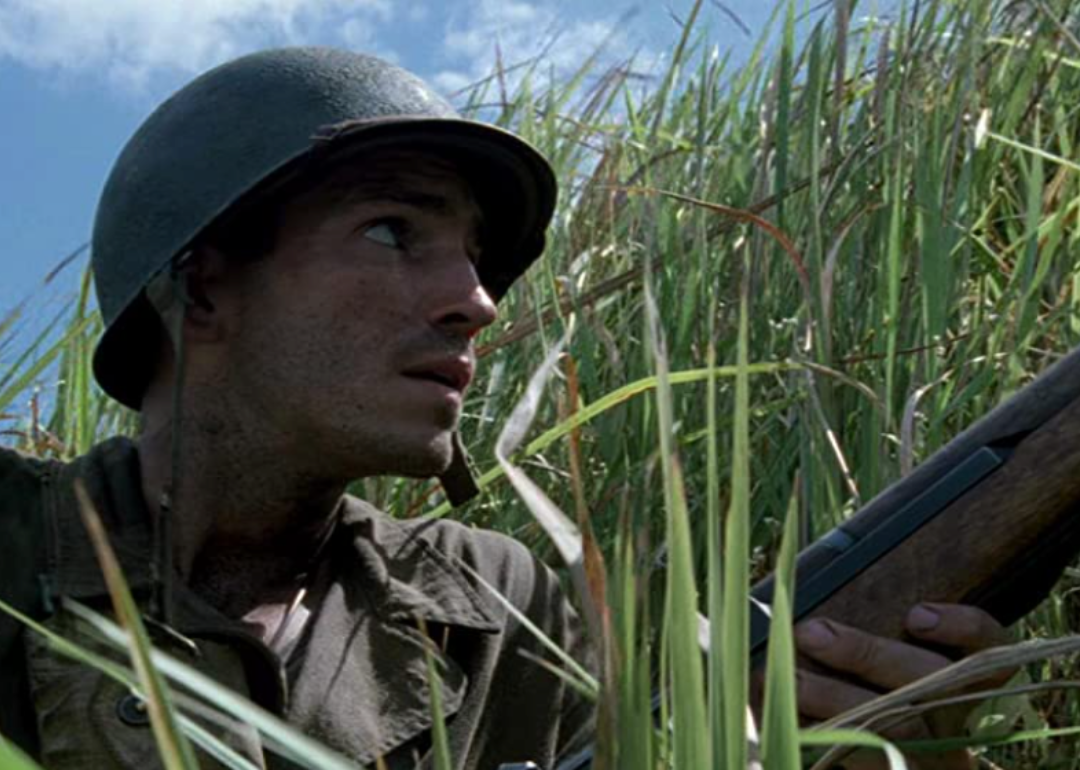
Fox 2000 Pictures
The Thin Red Line (1998)
Jim Caviezel in a scene from “The Thin Red Line.”
– Director: Terrence Malick
– IMDb user rating: 7.6
– Metascore: 78
– Runtime: 170 minutes
“The Thin Red Line” is a film without being overtly political. The movie tells the fictionalized story of the soldiers that comprised C Company, 1st Battalion, 27th Infantry Regiment, and 25th Infantry Division, and their experience at the Battle of Gifu during World War II. Through its all-star cast of Sean Penn, Jim Caviezel, Nick Nolte, Elias Koteas, Ben Chaplin, and more, director Terrence Malick focuses more on the hearts of each character, opting for a soulful look into the terrors of war.
Bryna Productions
Paths of Glory (1957)
Kirk Douglas in a military uniform in a beautiful ornate historic room.
– Director: Stanley Kubrick
– IMDb user rating: 8.4
– Metascore: 90
– Runtime: 88 minutes
Another film directed by Stanley Kubrick, “Paths of Glory” is set during World War I. It tells the story of Colonel Dax (Kirk Douglas) as he tries to defend his soldiers from charges of cowardice after they refuse to continue a suicidal mission.
You may also like: Famous movie quotes from the year you were born
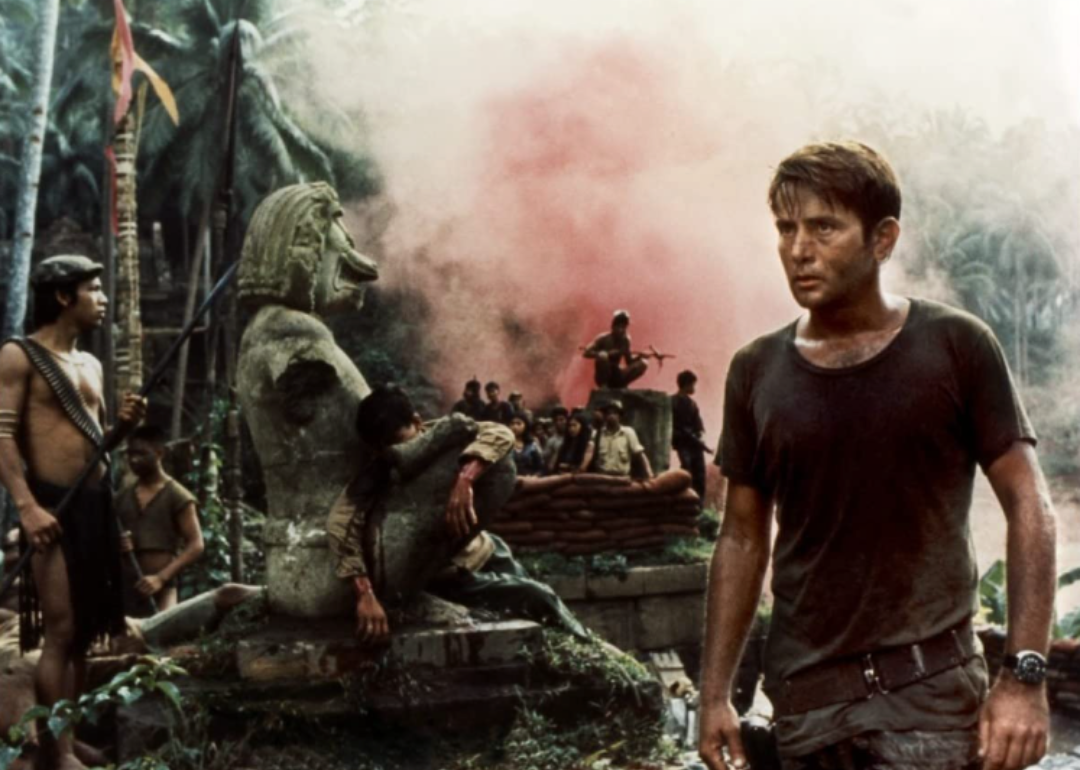
American Zoetrope
Apocalypse Now (1979)
Martin Sheen in army fatigues in a war zone.
– Director: Francis Ford Coppola
– IMDb user rating: 8.5
– Metascore: 94
– Runtime: 147 minutes
Set during the Vietnam War, “Apocalypse Now” is a wild ride of a film that depicts the savageness and absurdity of war. Interestingly enough, director Francis Ford Coppola hesitates to call it anti-war, though.
“No one wants to make a pro-war film, everyone wants to make an anti-war film,” he said in 2019. “But an anti-war film, I always thought, should be like ‘The Burmese Harp’—something filled with love and peace and tranquility and happiness. It shouldn’t have sequences of violence that inspire a lust for violence.”
Nikkatsu
The Burmese Harp (1956)
A man dressed as a monk walking on a path.
– Director: Kon Ichikawa
– IMDb user rating: 8.0
– Metascore: data not available
– Runtime: 116 minutes
“The Burmese Harp” is a World War II movie told from the Japanese perspective. It tells the story of soldiers who fought in the Burma campaign. When one of their comrades goes missing after the war, the other soldiers set out to see if he survived and, in the process, find a harp-playing Buhhdist monk who resembles their friend.
Mosfilm
The Cranes Are Flying (1957)
A woman with a dirty face next to a man in a military uniform and helmet.
– Director: Mikhail Kalatozov
– IMDb user rating: 8.3
– Metascore: data not available
– Runtime: 95 minutes
Set during World War II, “The Cranes Are Flying” is a movie that explores the harm war inflicted on the Soviet psyche. The story begins on June 22, 1941—the day Germans invaded Moscow—and depicts how two lovers, Boris and Veronika, weather the consequences of conflict.
Mij Film Co.
Turtles Can Fly (2004)
A group of young boys behind a barricade in the mountains with a large gun and ammo.
– Director: Bahman Ghobadi
– IMDb user rating: 8.0
– Metascore: 85
– Runtime: 98 minutes
“Turtles Can Fly” is a Kurdish movie that tells the story of four refugee children on the Iraq-Turkey border as they await the Americans to invade Iraq and take down Saddam Hussein. It was notably the first film to be made in Iraq after the fall of Hussein.
Igor Film
The Battle of Algiers (1966)
A courtyard full of people and a tank fighting.
– Director: Gillo Pontecorvo
– IMDb user rating: 8.1
– Metascore: 96
– Runtime: 121 minutes
“The Battle of Algiers” depicts the events of the eponymous campaign led by the Algerian Front de Libération Nationale against the French government during the 1950s. The film focuses on revolutionary fighter Ali La Pointe, and director Gillo Pontecorvo recruited mainly nonprofessional actors who lived through the actual battle.
You may also like: 25 iconic closing shots from film history
CJ Entertainment
Joint Security Area (2000)
A man in uniform at a border crossing holds his hand out to stop with guards behind him.
– Director: Park Chan-wook
– IMDb user rating: 7.7
– Metascore: 58
– Runtime: 110 minutes
“Joint Security Area” is a mystery-thriller that depicts the frozen conflict between North and South Korea. The story centers around a fatal shooting in the Korean Demilitarized Zone and the investigation of the murder.
TriStar Pictures
Starship Troopers (1997)
Troopers with guns running in battle with giant alien bugs behind them.
– Director: Paul Verhoeven
– IMDb user rating: 7.3
– Metascore: 52
– Runtime: 129 minutes
“Starship Troopers” may be a movie based on a fictional intergalactic war, but its anti-war themes have been praised (after people realized it was a satire). The film was actually panned by critics upon its initial release—who thought that it was promoting fascism—when in reality director Paul Verhoeven’s goal all along was irony.
BBC
Threads (1984)
A group of protesters in front of a government building with signs against nuclear war.
– Director: Mick Jackson
– IMDb user rating: 8.0
– Metascore: 92
– Runtime: 112 minutes
The BBC television film “Threads” tells the horrific hypothetical story of what could happen during a nuclear war. Set in Sheffield, England, the movie shows the catastrophic damage done after a nuclear bomb is dropped, including plummeting temperatures of a nuclear winter. Its chilling tagline says it all: “The closest you’ll ever want to come to nuclear war.”
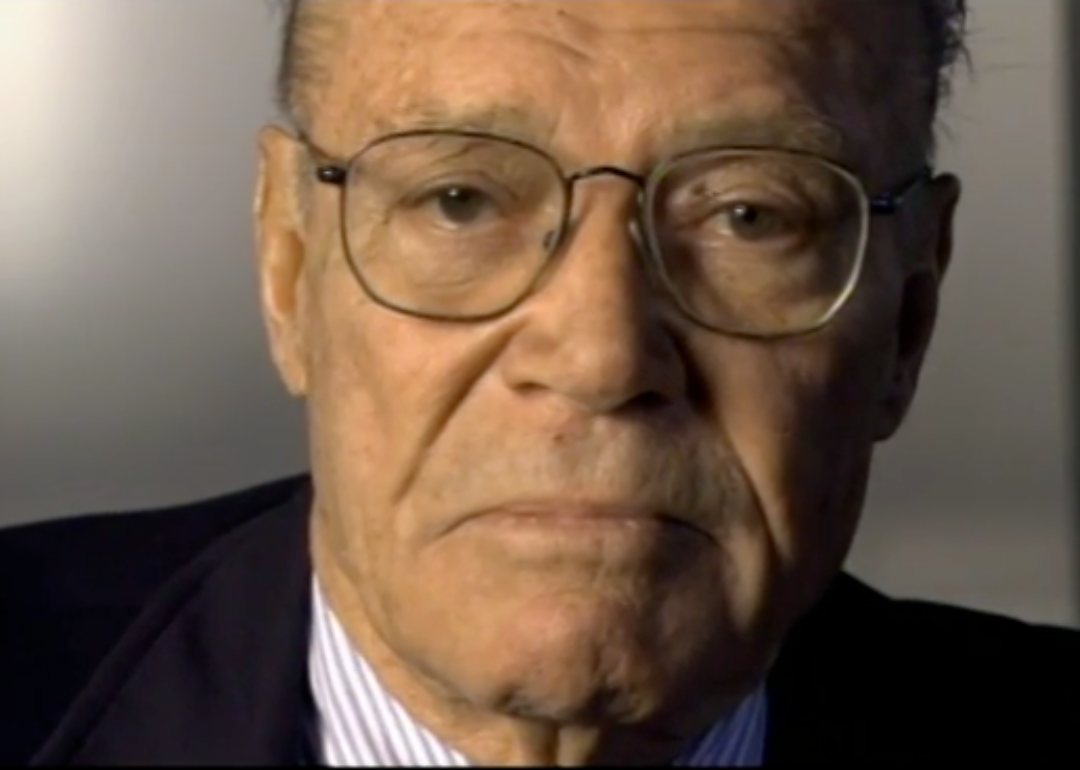
Sony Pictures Classics
The Fog of War (2003)
Robert McNamara looking directly into the camera.
– Director: Errol Morris
– IMDb user rating: 8.1
– Metascore: 87
– Runtime: 107 minutes
“The Fog of War” is a documentary about the life of former U.S. Secretary of Defense Robert McNamara, who served under presidents John F. Kennedy and Lyndon B. Johnson. In the film, he discusses his views on modern warfare and his roles in the Cuban missile crisis and the Vietnam War. In addition to making tough decisions as secretary of defense, McNamara also served in the air forces during World War II.
Hemdale
Platoon (1986)
Charlie Sheen in military gear walking past a sign pointing to various cities with a military jeep in the background.
– Director: Oliver Stone
– IMDb user rating: 8.1
– Metascore: 92
– Runtime: 120 minutes
“Platoon” is the first installment of Oliver Stone’s Vietnam War trilogy and is based on the director’s own experience in the war as a U.S. infantryman. While other war films make fighting seem fantastical and, in some cases, glamorous, “Platoon” shows the real, gritty nature of warfare and purposely doesn’t have a standard hero.
You may also like: 100 greatest movie songs from 100 years of film
Réalisation d’art cinématographique (RAC)
The Grand Illusion (1937)
A man trapped in a room using a spoon to carve on the wall.
– Director: Jean Renoir
– IMDb user rating: 8.1
– Metascore: data not available
– Runtime: 113 minutes
Released nearly 20 years after World War I, “The Grand Illusion” is a French film that explores class relationships among a group of French officers who are plotting their escape after becoming prisoners of war. The movie’s title comes from a 1909 book of the same name that argued war did not make sense from a social or economic standpoint.
Searchlight Pictures
A Hidden Life (2019)
A military officer speaks to a man in handcuffs in a chair.
– Director: Terrence Malick
– IMDb user rating: 7.4
– Metascore: 78
– Runtime: 174 minutes
“A Hidden Life” tells the true story of Franz Jägerstätter, an Austrian farmer who refused to fight for the Nazis during World War II. A devout Catholic, Jägerstätter wrestles with the notion that his decision will most likely lead to prison and even death, but his faith in God helps him find peace.
R&R Films
Gallipoli (1981)
Mel Gibson in a military hat and jacket.
– Director: Peter Weir
– IMDb user rating: 7.4
– Metascore: 65
– Runtime: 110 minutes
Set during World War I, “Gallipoli” centers a group of young Australian men who enlist in the Australian army. They get sent to the eponymous peninsula in the Ottoman Empire (modern-day Turkey) to fight in the Gallipoli campaign, and during their time there, they begin to realize the truths of war.
Argos Films
Hiroshima Mon Amour (1959)
A man in a suit kneeling down to talk to a woman petting a white cat next to a tree.
– Director: Alain Resnais
– IMDb user rating: 7.9
– Metascore: data not available
– Runtime: 90 minutes
“Hiroshima Mon Amour” is considered one of the most influential movies of the French New Wave for its uses of flashbacks and nonlinear storytelling. The story itself is told through intense dialogue between a French actress visiting Hiroshima to make an anti-war film and a married Japanese architect who fought in World War II. In addition to being an anti-war film itself, “Hiroshima Mon Amour” is also a romantic drama.
United Artists
Hotel Rwanda (2004)
Nick Nolte in a military uniform pointing at something as he speaks to Don Cheadle.
– Director: Terry George
– IMDb user rating: 8.1
– Metascore: 79
– Runtime: 121 minutes
Based on the Rwandan genocide, “Hotel Rwanda” tells the true story of hotelier Paul Rusesabagina and his wife Tatiana’s efforts to save lives during the violent attacks. Rusesabagina heroically housed his family and more than 1,000 refugees fleeing the Interahamwe militia in Hôtel des Mille Collines.
You may also like: 100 best American movies of all time
Audjeff
Hearts and Minds (1974)
A man in an army uniform standing on the street talking to people.
– Director: Peter Davis
– IMDb user rating: 8.2
– Metascore: 68
– Runtime: 112 minutes
Released shortly after the United States pulled out of the Vietnam War, “Hearts and Minds” is a polarizing documentary praised for its rawness and criticized for its heavy-handedness. Its title is taken from the Lyndon B. Johnson quote, “The ultimate victory will depend on the hearts and minds of the people who actually live out there,” and despite its divisiveness, the film won the Oscar for Best Documentary at the 1975 Academy Awards.
Aspen Productions (I)
M*A*S*H (1970)
Military members piled into and running with an army jeep uphill.
– Director: Robert Altman
– IMDb user rating: 7.4
– Metascore: 80
– Runtime: 116 minutes
Though set during the Korean War, the subtext of “M*A*S*H” is the Vietnam War, which was going on when it was released. The film used comedy to tell its story about a group of medical personnel running a Mobile Army Surgical Hospital and, at its core, portrayed the miseries of war. “M*A*S*H” was so successful that it was adapted into a television series that ran from 1972-1983.
Haft Entertainment
Tigerland (2000)
Colin Farrell hanging out of a window on a US Army bus.
– Director: Joel Schumacher
– IMDb user rating: 7.0
– Metascore: 55
– Runtime: 101 minutes
Named after an actual U.S. Army training camp for infantrymen preparing to fight in the Vietnam War, “Tigerland” follows Private Roland Bozz (Colin Farrell), a draftee opposed to the war. During his time in camp, Bozz tries to find ways for his fellow soldiers to get out of the Army and inspires others to do the same.
CIP Filmproduktion GmbH
Hair (1979)
A group of hippies dancing in a park.
– Director: Milos Forman
– IMDb user rating: 7.5
– Metascore: 68
– Runtime: 121 minutes
“Hair” is a musical dramedy set during the Vietnam War. It tells the story of draftee Claude Hooper Bukowski, who befriends a group of hippies while en route to the army induction center. His new friends introduce Bukowski to drugs, unconventional relationships, and draft evasion.
Charles Chaplin Productions
The Great Dictator (1940)
Two different dictators (one being Charles Chaplin) hold foods from their respective countries in big bowls pointed at each other.
– Director: Charles Chaplin
– IMDb user rating: 8.4
– Metascore: data not available
– Runtime: 125 minutes
Known as his first true talkie, Charlie Chaplin condemns Adolf Hitler, Benito Mussolini, Nazis, fascism, and antisemitism in “The Great Dictator.” In the satirical black comedy, Chaplin plays the roles of both a fascist dictator and a persecuted Jewish barber.
The movie was released at the onset of World War II, and in his 1964 autobiography, Chaplin lamented his decision to mock Hitler. “Had I known the actual horrors of the German concentration camps, I could not have made ‘The Great Dictator,'” he wrote. “I could not have made fun of the homicidal insanity of the Nazis.”
You may also like: Can you guess which iconic movie these scenes are from?
